The Canadian Food Guide: No longer a prescription diet
The push towards a plant based diet
Canada’s Food Guide
We are constantly changing the way that we are eating. It could be because of something you read in a weight loss magazine, heard through the grapevine, or maybe even a new trending diet on Instagram. In today’s technological era it’s tough to determine what’s authentic and what’s just straight-up fake. One resource that you can trust has just presented us with a new guide to healthy living. Enter – the new and improved Canadian food guide!
It’s getting three cheers from some and eye rolls from others.
Canada’s Food Guide: So what has changed?
It is no surprise that the Canadian food guide has seen its fair share of changes since its publication in 1942. That being said, the guide has been in a 12-year hiatus and Canadians are eager to see what changes are being made.
The process has so far taken three years, with Health Canada hiring various market research companies to consult with more than 26,000 Canadians. Health Canada has also held briefing sessions with various health associations and industry groups. – CBC News
As Canadians, we rely on the national food guide to decrease the number of nutritional deficiencies and increase overall health. In the past, it has provided us with portions sizes, food groups, cooking tips, and scientific research. It helps us ensure that our loved ones live long and healthy lives. We can see that the updated guide is exploring a new direction that reinforces a vegetarian style diet (plant based) and kicks the food groups to the curb.
That being said, the food guide is a one size fits all approach. It may not be considering your personal deficiencies, body type, lifestyle choice(s), and you should use it as a reference when planning meals. The best course of action is to consult a nutritionist or specialist before making significant changes to your own diet.
Here are the changes that we have identified
- More focus on a plant-based diet(s)
- Dairy and meat are being pushed out
- No more four food groups
- Eat more fruits and vegetables
- No more portion sizes
- Increase your water consumption
- Food philosophy (eating together)
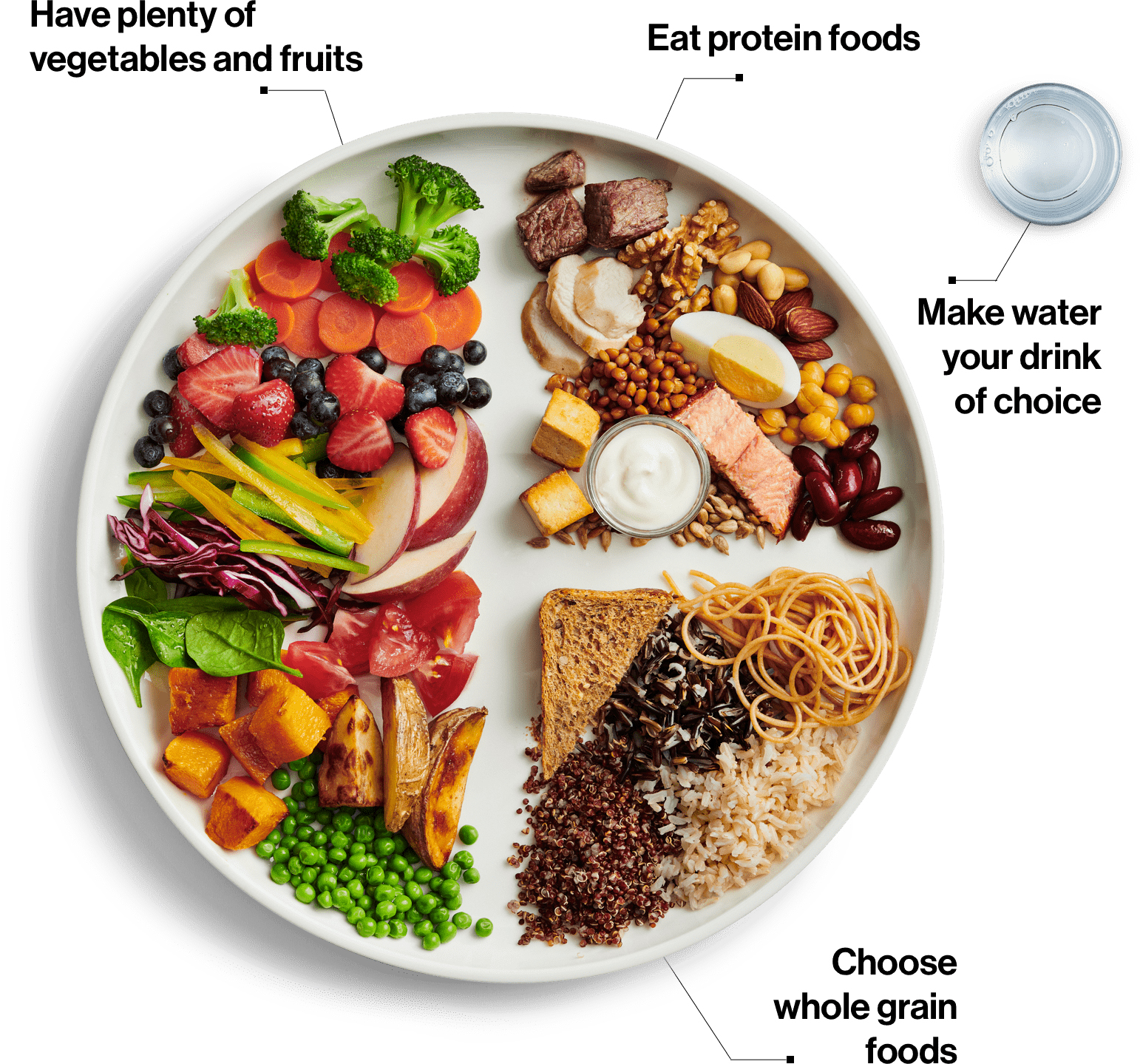
Canada’s Food Guide: Time to take action
The new food guide image conveys a simple message according to Health Canada: Eat a diet made up of roughly half fruits and vegetables, and half of the remaining two categories — easy as that.
“It doesn’t need to be complicated folks,” Petitpas Taylor said. “It just needs to be nutritious, and, might I dare say, fun.”
However, the overall simplicity of the new guide is still receiving mixed reviews and skepticism.
If we look back at the previous prescription approach it was unachievable and quite frankly, directed towards children (you remember the four food groups rainbow in elementary school). The new food guide has simplistic yet powerful imagery that encourages people to make realistic changes to live their best life.
We can now say goodbye to the recommendations to eat a specific number of serving sizes across each of the food groups. Gone is information about what makes up a serving size for different types of food. Let’s be honest, did you ever weigh, scale, and categorize your foods so that you ate the prescribed amount of food for each food group? Of course not, nobody has the time for that!
Dairy Products: So long milk, it was good while it lasted
Milk, for as long as we can remember, has always been a staple of the Canadian diet. Its nutritional benefits were linked to bone and dental health, diabetes prevention, and heart health.
As the times are changing we are entering a new era of healthy eating and health professionals are putting dairy under the microscope. Not just milk is under scrutiny, its the entire dairy category! That includes items such as cheese, cream, butter, yogurt, and ice cream, just to name a few.
Many people are disgruntled with the removal of dairy as an independent category. It has been placed into another category that we can agree may be less visual, but it’s still a part of the food guide. It has become a misconception that dairy is deemed “unhealthy”. Dairy products still offer a variety of different benefits but the traditional dosage or “3 pints per day” is just unnecessary. To follow suite, dairy consumption/sales have also been decreasing for the last 10 years according to the government of Canada.

Dairy Products: The alternatives are getting more attention
For those of you that love dairy you are in luck. A variety of alternatives are at your disposal that are extremely competitive with cows milk when it comes to nutrients, fats, and calcium. If you are intolerant and allergic to cows milk you can still consume some of the alternatives (almond milk). You may have already identified the significant changes happening in the United Kingdom. Non-dairy sales were three times bigger than dairy sales at Whole Foods Market in the UK this year (2019). This means that dairy is not completely disappearing but consumers are focusing their attention on many other alternative forms.
- Almond milk
- Soy milk
- Coconut milk
- Rice milk
- Oat milk
Depending on which alternative fits your lifestyle, you may be able to decrease costs by making it at home and, therefore, decrease damaging environmental impacts while maintaining sufficient nutrient intake.
Milk Nutrition: What are Caddle members saying about milk?
You spoke up about milk consumption and the changes to the Canadian food guide. The majority of our respondents were millennials (in their 30’s) and from Ontario. Here is what we gathered:
- Out of the 92% that consume dairy, 62% disagree with the new food guide
- Large percentage of the respondents had small children at home (increased milk consumption)
- 50% consume milk for the taste and 43% said that they consume milk for its nutritional value
- 73% of members said they didn’t consult anyone about their dairy consumption
Dairy Products: Decreased consumption comes at a price
Changes that have been made to the Canadian food guide have outraged dairy farmers and rightfully so. Milk has been removed as an independent category and grouped into proteins. With milk consumption decreasing in general, it’s worrisome for stakeholders in the dairy industry.
The Canadian government places significantly high tariffs on importing milk into Canada. This is preventative measure attempts to decrease the market saturation of American products and protect local dairy farmers.
“The Canadian dairy industry is a key driver of our national economy and represents one of the largest agri-food industries in the country,” said Wally Smith, President of Dairy Farmers of Canada.
Canada’s dairy industry brings in about 20 billion in GDP, 3 billion in tax contributions and over 200,000 full-time jobs. The question that we have to ask ourselves as consumers is, are we willing to ignore new research findings in order to support the dairy industry?
Did you say a Plant Based Diet?
Some of you are wondering, what is a plant based diet? Others might be thinking how can this diet be sustainable long term?
No, a plant based diet doesn’t mean that you have to go into your fridge or freezer right now and get rid of that steak or chicken.
It means that you should consciously prioritize fruits, vegetables, nuts, grains, legumes, beans, seeds, and oils. Aside from the array of health benefits that are associated with this diet it also comes with environmental sustainability.
When switching to a plant based diet it comes with a bit of homework. You need to understand what nutrients you receive from the foods you plan on giving up and ensure that you are receiving the equivalent in the foods you plan on consuming.
The best way to get started is just allocating one day of the week to strictly eat plant based foods. Following food guides or industry professionals online to get the best recipes and up to date information doesn’t hurt either. Check out the example!
Plant Based Diet Example:
Breakfast: Breakfast wrap with whole grain tortilla, scrambled egg(s), black beans, peppers, onions, and your choice of sauce.
Lunch: Mediterranean salad with fresh lettuce, cucumbers, chick peas, lentils, goat cheese, avocado, and dressing.
Dinner: Grilled veggie kabobs with green and red peppers, grilled tofu, spinach salad, and zucchini.
Canada’s Food Guide: What you should takeaway from the changes
Canada’s updated food guide has retired the traditional rainbow and four food groups in order to appeal to a wider audience. It has demoted meat and dairy by placing them into categories with a wider range of proteins.
The new food guide accurately reflects the existing research about human anatomy and healthy living, while limiting the biased input from special interest parities.
Some of the main reasons people are cutting milk are connected to the environment, health, and ethics (religious beliefs). If you want to keep milk as apart of your daily routine consider the array of different alternatives that offer great taste, nutritional benefits, and no environmental impact.
This food guide does not spoon feed you like it has in the past. It requires you to take action by showing you what your plate should look like when you sit down to have a meal. It is apart of Canadian culture to cook, talk, laugh, and eat together.
It’s time to put down the processed food that have become so accessible and convenient. We should give the new food guide a chance and see if it can have a positive impact on society and our wellbeing.
About Caddle
Thanks for reading our blog post! If this is your first time on our webpage you may be wondering who we are and what we do?
Caddle is a data insights company that has a passion for understanding market trends which can be translated to the market industry leaders for the benefit of understanding the buying behaviors of their consumers.
Click this link to find out more and earn some cash back from our surveys!
[simple-author-box]
Fintech: 3 reasons why you didn’t like online banking
Fintech: Online Banking Adoption Rate
Online banking has seen tremendous growth and success in the Canadian market with an approximate 50% penetration rate. These numbers are constantly climbing and we could expect higher rates every year as the services become more user-friendly.
Online banking awareness is at an all-time high with 96% of people stating that they have at least heard about the services that are provided such as e-transfer, paying bills, depositing cheques and more.
Fintech can act as an extension for the existing physical spaces. For example, you could complete simple, mundane tasks online while using the available in-branch services to make more complex decisions
That being said, with the banking industry still shifting its focus from brick and mortar operations to digital servicing, it’s important to us at Caddle to determine what suggestions you would make to optimize this technology.
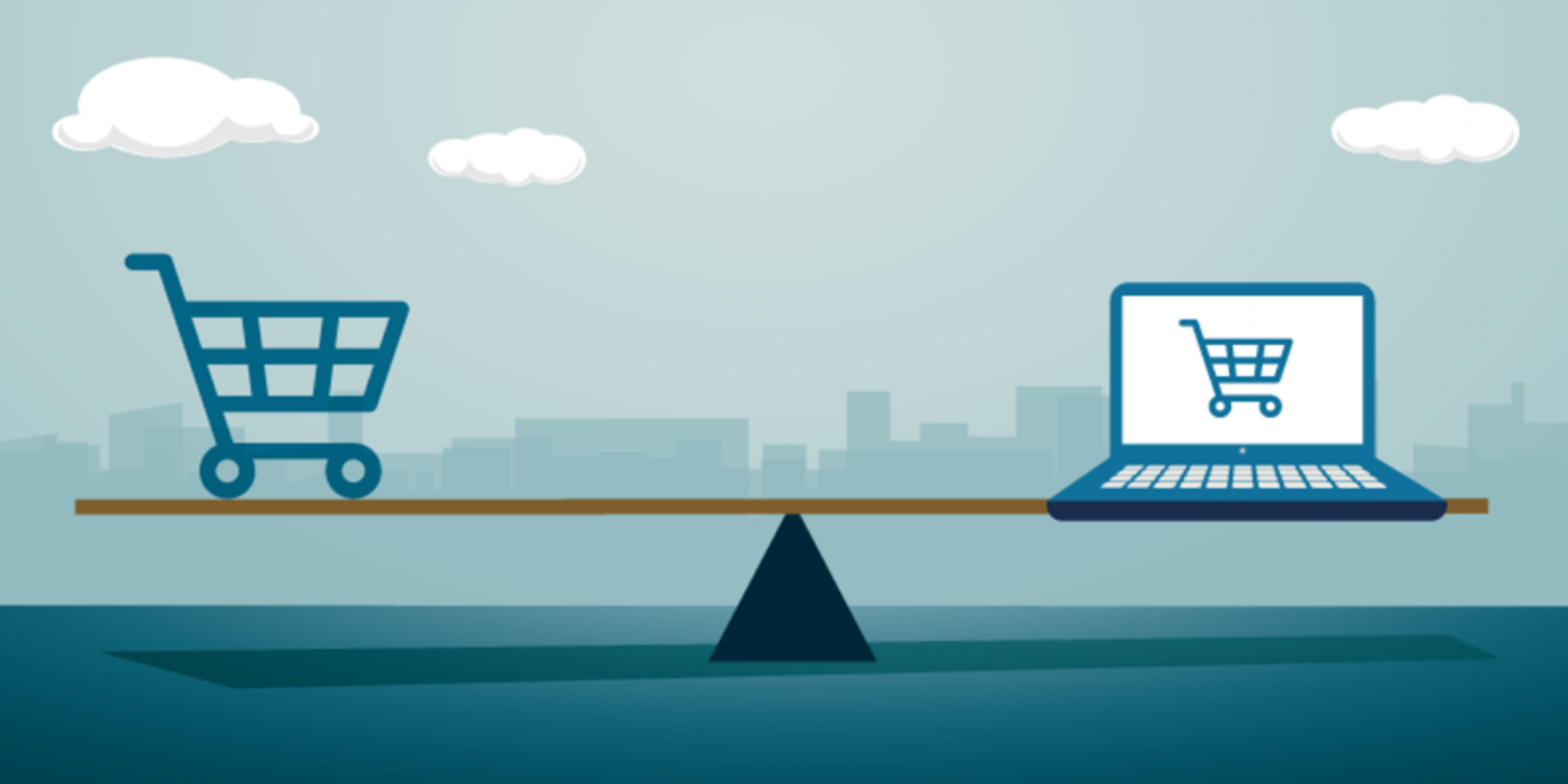
We got to hear from you!
Some of you still may be wondering, what is Fintech? It’s a combination of “Finance & Technology”. Fintech includes a variety of different services including:
- Insurance
- Transaction delivery
- Peer to peer lending
- Loans
- Digital wallets
- Online banking
So how does Caddle fit in? Caddle is a data insights company that has a passion for understanding market trends which can be translated to the market industry leaders for the benefit of understanding the buying behaviors of their consumers.
We took a look at what our members had to say about Fintech. With an average of about 8000 survey respondents approximately 80% of respondents were female, 50% were Millennials, and 40% were from Ontario. We hope that using this sample size we can garner a better understanding of Fintech and help provide the best insights.
Financial technology (Fintech) is used to describe new tech that seeks to improve and automate the delivery and use of financial services.
Based on the results we determined that our members are not supporters of this new technology for three major reasons.
1) Fintech: Digital Banking Awareness
We conducted a digital bank survey that was focused on determining our member’s awareness and preferences when it comes to conducting their finances online. For this particular survey, we are talking about banks that are solely online with no available storefronts.
We found that more than half of our members were familiar with digital banking. That being said, 54% did not use digital banks and the next best option was Tangerine. All those Toronto Raptors commercials are paying off!
What is interesting is that digital banks have a multitude of advantages that traditional banks don’t. For example, they can offer you higher interest rates and lower banking fees because they have cheaper operating costs than brick and mortar locations.
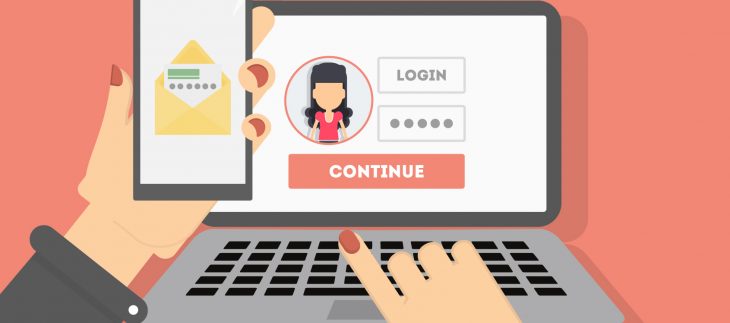
Fintech: Why not make the switch?
If people are willing to sacrifice earning more money there must be some underlying issues. Banks have invested plenty of money into targeting Millennials and onboarding them to digital platforms.
What is causing people to be so skeptical?
This could be a result of respondents feeling neutral when it comes to their personal info and data being safe with digital banks. Does that mean you heard about the Capital One security breach?
Members simply had no interest when it comes to switching to a digital bank. This could be a result of banks failing to address your concerns:
- Where do I deposit my cash?
- How do I talk to a real person?
- What type of insurance coverage do I get?
2) Fintech: The Banking App Experience
The findings from the banking app experience survey helped us identified that only 34% of members had a “good” experience when conducting transactions online. This includes them logging on a few times a week to check the status of their accounts.
Members were comfortable completing simple transactions such as:
- Transferring money (e-transfer)
- Paying bills
- Checking account balances
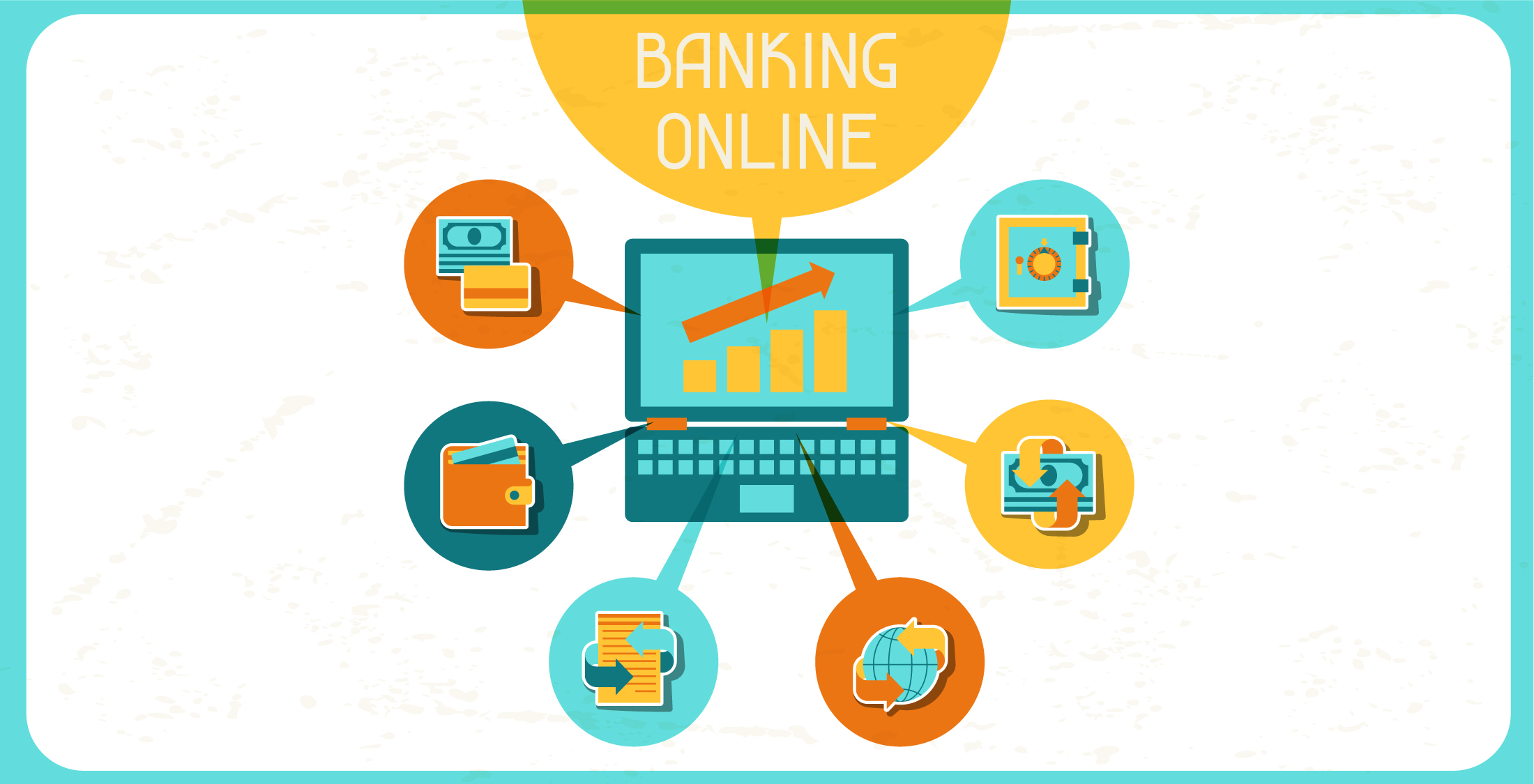
Fintech: Online Banking Stops Here
The previous results were anticipated but when asked if members conducted any other activities like communicating with advisors, applying for loans or mortgages, or opening accounts, the majority said they don’t complete any activities.
This is important because it is evident that members are not comfortable making certain decisions using online platforms whether or not it is an issue of privacy, lack of financial guidance, or inaccessibility.
3) Fintech: The New Digital Wallet
How many of you carry cash? Probably not often right? What if I told you now you don’t have to carry your wallet. The future is here, all you have to do is tap your phone to make a purchase! (ie: apple pay)
To be honest, it’s an interesting experience and there are valid points made from each side of the spectrum.
67% of you said that you don’t currently use a digital wallet.
Here are the following reasons why our members are skeptical about making the leap to digital wallets:
- Safety and security. Members disagreed with the following statement, ‘my personal information and money is safe with digital wallets’.
- Over half of the respondents were Millennial’s (1978-1996). A large portion of these members are not digital natives.
- There is a lack of awareness and perceived functionality.
- Digital wallets are a relatively new concept (less than 10 years). This technology is still in the early adoption stage.
- Out of the respondents that did use digital wallets they preferred Apple Pay.
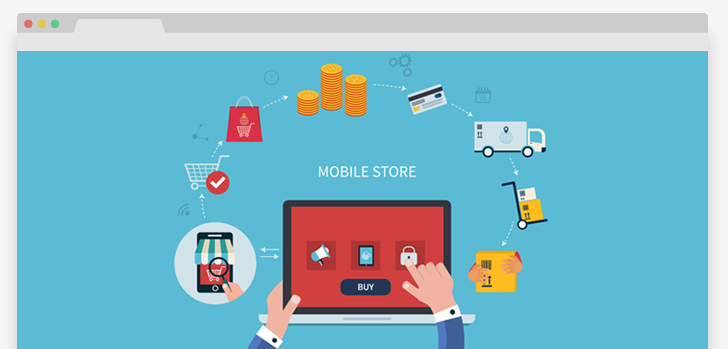
Fintech: Digital Transactions Experience Steady Increase
According to a study completed by Payments Canada, they found that “in 2016, the number of contactless transactions increased significantly, to almost 2.1 billion transactions worth $67.1 billion.
This represents an 81% and a 78% increase over 2015, in both volume and value terms (respectively).”
At Caddle, we feel that the lack of presence and usage of digital wallets lies in the hands of the organizations. There is just simply a lack of education and promotion surrounding the benefits associated with this technology.
Hotspot shield also conducted a survey and found similar results.
“A strikingly small 12 percent had ever used any of the applications at all. Of those who had used the technology, PayPal was the runaway favorite, while second-place Google Wallet had been used by only 8 percent of the survey subjects”.
Consequently, our respondents displayed minimal interest in converting their handheld wallets to be linked to their mobile devices.
What’s that old saying? If it ain’t broke, don’t fix it?
The Saftey Guide
For those of you that are going to be cashing in those Caddle earnings and saving more money by shopping online, we have a safety guide just for you. Get your pen and paper ready. Whether or not you will be browsing Amazon or taking advantage of Cyber Monday/Black Friday, this guide will protect your money!
- Review your bank statements (every month)
- Don’t make purchases on PUBLIC wifi
- Secure your home wifi
- Use two-factor authentication (2 passwords for your banking)
- Change the password for your email/bank after the holidays
- Don’t share your PIN(s) with anyone
- Look for spelling errors or inconsistencies on websites
- Use 3rd party sources (PayPal) to secure your funds
In Canada alone, there were over 1.2 million in compromised funds last holiday shopping season with a total of 1179 victims.
Now that you have got some good tips and tricks we want to hear from you! Check out our daily surveys on the Caddle app and share some of your insights using this link. Whats are some of the holiday gifts that you will be purchasing? Are you going to be shopping online or in-store? We want to hear it first!
Thanks for reading! Follow us on social media and register online to have access to more blogs and surveys.
[simple-author-box]
Plastic Water Bottles: Your guide to ditching single-use plastic
Plastic water bottles
After the rise of plastic water bottles, companies recognized its potential as an indestructible material that you could drop, kick, smash, or leave on the shelf for weeks.
What they forgot to consider is how the heck is this material going to break down or decompose, and at what cost?
We are now only considering this a problem after we have spent over 11.7 billion dollars on 8.8 billion gallons of water. To put that in perspective, we use 2 million water bottles every 5 minutes.
The average adult’s body is composed of at least 55-65% water. So I’m not advocating for you to stop drinking water, but I challenge you to rethink the way you drink it. (Let us know how you use plastic by clicking here.)
We are going to cover 5 key areas:
Plastic water bottle pollution
If you want to talk about multitasking, plastic water bottles are the all-time champions! Not only do they pollute during the process of extracting and processing fossil fuels, they even get you at the back end. Approximately only 10% of water bottles are effectively recycled. Pollution not only impacts our climate, but it can also lead to severe health risks for humans and animals.
“Studies estimate there are now 15–51 trillion pieces of plastic in the world’s oceans — from the equator to the poles, from Arctic ice sheets to the seafloor”.
It’s extremely difficult, if not impossible, to remove all the plastic once it has made its way into the ocean. Our solution to this problem needs to begin on land. Fish, sea birds, and other marine mammals are ingesting thousands of plastic microfibers each year.
Government Intervention: We have gone too far
Campaigns and petitions are pushing for plastic(s), especially water bottles, to be considered pollutants. Governments and activists are beginning to ban together in their fight to eliminate single-use plastics. We have already seen policy changes in San Francisco, Washington, Kenya, India, France, Bangladesh and even in our own backyard.
“The Justin Trudeau-led government also decided to take necessary measures to reduce plastic pollution in Canada. Canadians are trying to ban plastic bottles, bags, and straws in as early as 2021. However, in Montreal, there is already a ban on plastic items”.
How long does it take for a plastic bottle to decompose?
So do plastic bottles even break down since they are so resilient? In fact, they do… after about 1000 years. Once they break down, you guessed it, they leak harmful chemicals into the ocean or soil. Sunlight or UV rays are often the most effective in breaking down plastics that didn’t make it to recycling facilities.
You might have read about the uninhabited island where over 4000 pieces of plastic were found, ranging from water bottles to plastic straws. Maybe you have seen your favorite restaurants and coffee places decrease prices when you bring your own mug. An issue that has been overlooked for years is coming back to bite us.
Decades after our existence people will still be cleaning up the water bottles that we are using today. Even Aquaman’s Jason Momoa has taken the initiative to help eliminate single-use plastic on a global scale.
Tap water or bottled water?
There has been an on-going debate surrounding tap water versus bottled water. A study was completed testing over 1000 water bottles from 103 different companies. The test was conducted to determine if there was a significant increase in water quality and purity in relation to tap water. The national resource of the defense council said that only one-third of the companies actually exceeded industry standards. In other words, bottled water is no different than tap water.
Environmental research provides evidence that bottled water is falsely advertised as pure and filtered. Despite this information, the plastic water bottle industry is still generating approximately 2.5 billion in revenues.
How is this even possible with what we know about plastics?
Bottled water companies attempt to capitalize on consumer’s fears of tap water suppliers. Brands such as Fiji, Smart Water, and Perrier have built their success by selling a desirable brand image.
Consequently, these products are feeling the pressures of increased sustainability as we try to minimize our environmental impact.
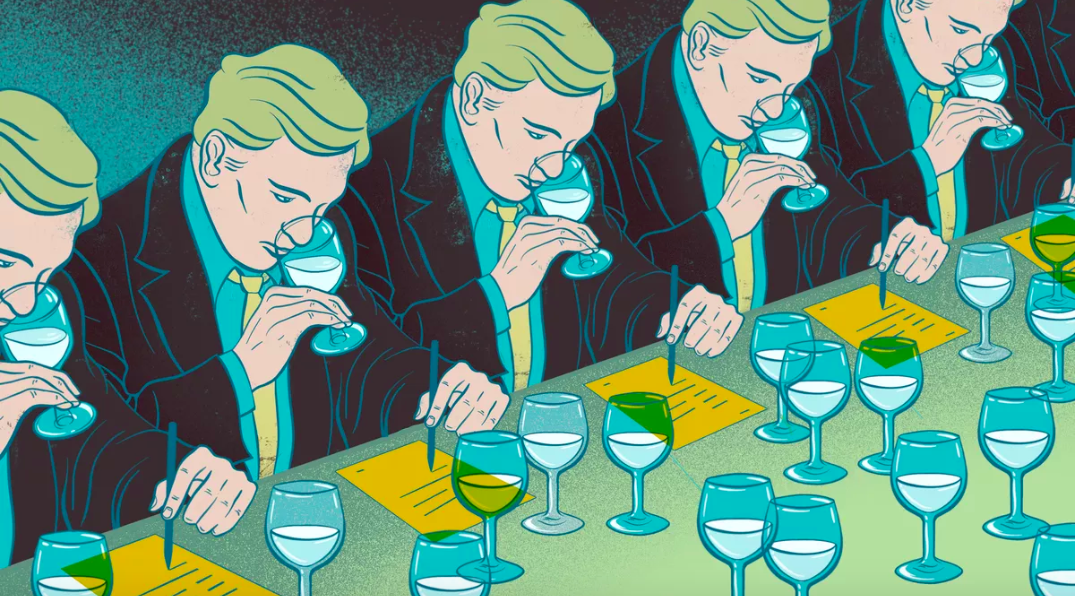
Still skeptical about tap water? Go to DrinkSoma and get a sleek-looking water filter!
Reusing Plastic Water Bottles
Now that we are on a roll, let’s look at another myth. People often think that reusing plastic bottles has severe side effects. Some people even say its considered cancer-causing.
This was deemed a rumor that was traveling around the web and you can visit the cancer society website to receive the full story. Keeping this in mind, do you ever hear people throwing around the term BPA?
If you’re like me, you nod your head but have no idea what they are talking about. BPA is found in many hard plastics. Its exposure to heat and extreme cold over long periods of time can cause the plastic to break apart into your beverage.
Now, this won’t cause any drastic, life-altering symptoms, but why take the risk? Many organizations offer BPA free bottle solutions. Make sure you identify this feature when buying your reusable bottle.
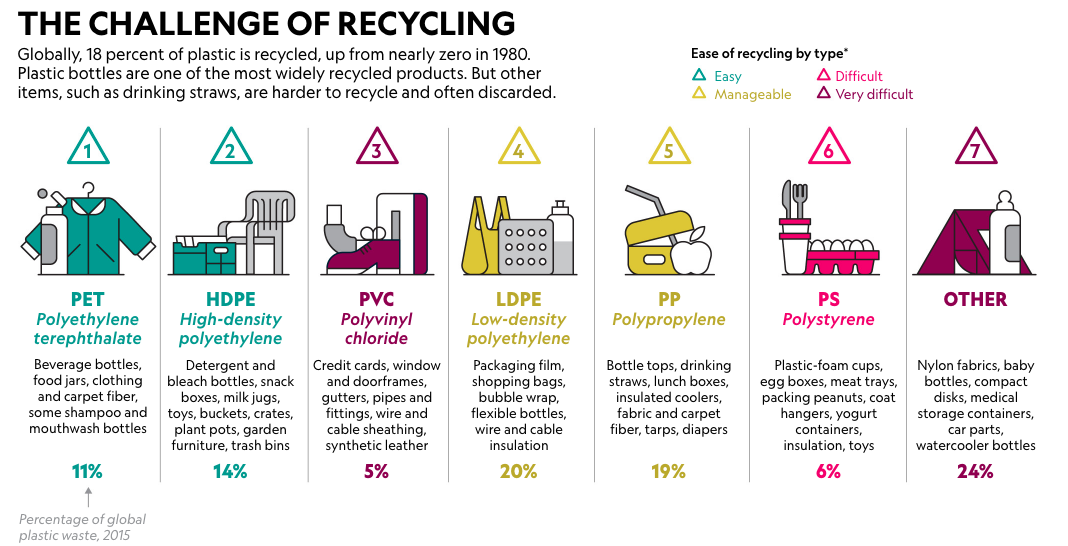
Recycling Plastic Water Bottles
Recycling water bottles is often a difficult procedure with strict rules and guidelines that need to be followed. We are all guilty of using plastics and maybe you are drinking out of a plastic bottle right now. However, I don’t think we should take all the blame.
We lack education and awareness surrounding topics such as plastics and pollution. Take the CBC article for starters. Canadians are paying millions of dollars in sorting costs because we are throwing items in the blue bin that aren’t even recyclable!
You mean I can’t put my old T-shirt in the blue bin? Seriously, they find this stuff every day! When you do use plastic products make sure you stay informed regarding what items are considered recyclable.
Plastic Alternative: Canned Water
Aluminum is much easier to recycle than plastic bottles. It can be recycled more times than plastic, it requires much less energy during this process, and there are often incentives to return cans. Aluminum is recycled 50% of the time compared to plastic bottles at 10%.
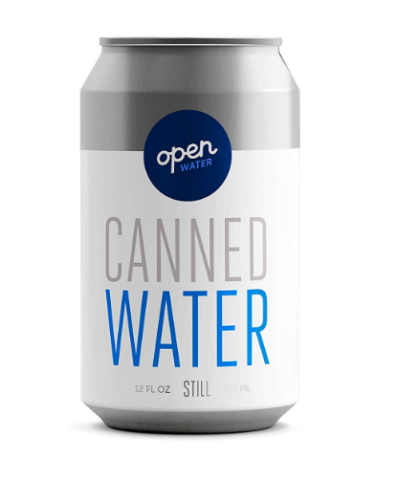
Plastic Alternative: Boxed Water
Boxed water not only looks great but it’s recyclable and biodegradable. If you still want the convenience of buying at any store make the switch to box water!
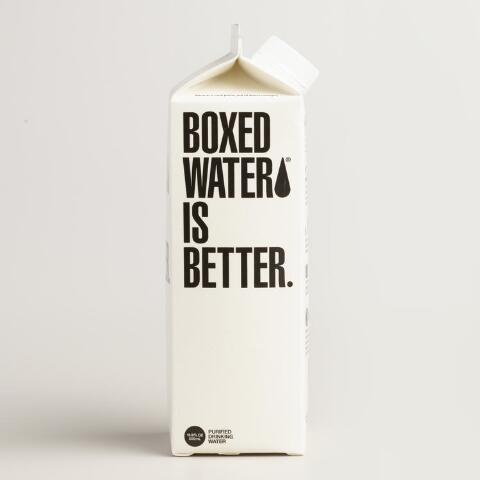
Plastic Alternative: Water Filter
Water filters used to be big, ugly, and annoying to maintain. Companies like Soma or Brita have taken this industry by storm giving filters a sleek design and becoming a must-have in the household.
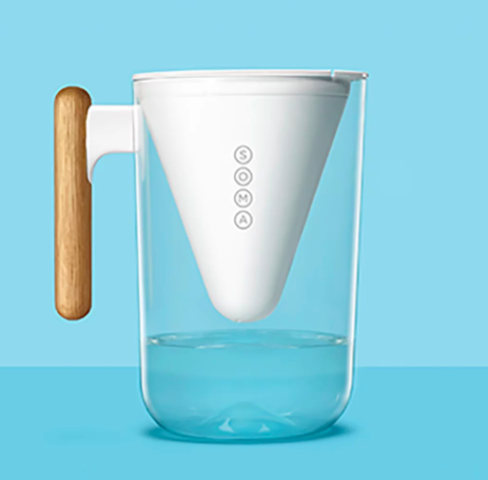
Plastic Alternative: Tap Water
You are already paying for it why not utilize it! You can pair it with the previously mentioned filters or just put it in a glass.
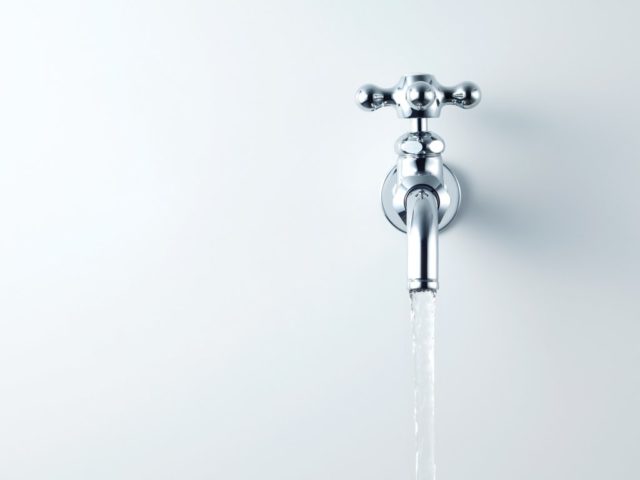
Plastic Alternative: Stainless Steel Bottle
An easy to clean, durable, and customizable option to take your water on the go. They come in a variety of different sizes and colors to fit your needs. Say goodbye to spending $5.00 a day on disposable bottles.
[simple-author-box]
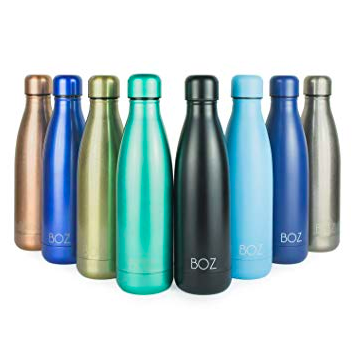
Plastic Straws: Canada’s Plastic Ban Explained
Why Canada is banning plastic straws. Here’s what to use instead
When it comes to plastic straws, Canada is taking action.
On June 10, 2019, Prime Minister Justin Trudeau announced the government’s intention to ban plastic straws, bags and all other single-use plastics by early 2021 in efforts to reduce non-recyclable waste.
The Prime Minister stated that, “Canadians know first-hand the impacts of plastic pollution, and are tired of seeing their beaches, parks, streets and shorelines littered with plastic waste”.
On top of this, several companies in Canada have also pledged to ban plastic straws in their facilities—including coffee chain Starbucks, which will eliminate all plastic straws from its stores worldwide by 2020.
While experts suggest the straws themselves only make up a tiny fraction of plastic in our oceans and coastlines, the plan marks the start of concerted effort to reduce our dependence on single-use plastic.
Here’s what you need to know.
How has Canada responded to Trudeau’s proposed plastic ban?
The response hasn’t been all sunshine and rainbows. And if you’re good at understanding both sides of the story, you might be able to understand why.
From an economic standpoint, this ban has the potential to hurt small businesses. To investigate this potential roadblock, the Canadian Federation of Independent Business has called for an assessment to see how this ban might affect small businesses.
For First Nations groups, this ban also proposes an issue as they rely heavily on plastic water bottles so they can get the fresh water they need.
Why are plastic straws bad for the environment?
Plastic straws negatively impact the planet in two key ways: Since they aren’t biodegradable they build up in oceans, coastlines and landfills. Secondly, the plastic itself releases chemicals into the environment that harms plant and animal life.
You might remember the glory days of plastic straws: sipping on an ice-cold soda on a hot Summer’s day without a care in the world. But what happened after you threw them away? Plastic straws made their way into our landfills and oceans.
All those refreshing sodas and all those straws led to a huge accumulation of plastic. In fact, plastic straws have made the top-ten list of items collected during beach cleanups. Scuba divers have even found great amounts of plastic dwelling under the sea. But, the negative effects of plastic straws impact our land just as much as our oceans. Plastic straws are not biodegradable.
To make matters worse, over time, the straws break into smaller particles, releasing harmful chemicals and toxins that pollute the soil, air and water—harmful to plants, animals and people alike.
Millions of turtles, whales and other marine wildlife die each year from ingesting plastic or being exposed to its harmful toxins.
The problem in Canada
Plastic straws contribute to the problems we face here in Canada and plastic straws are part of that. In total, over 10,000 tonnes of plastics enter the Great Lakes each year.
Of course, that isn’t all straws, but as a country, we use 57 million plastic straw each year. In the past 25 years, nearly 800,000 volunteers have removed over 1.3 million kilograms of trash from across Canada’s shorelines. The most commonly littered items were single-use plastic products
Are plastic straws recyclable?
Unfortunately not. Most of the plastic straws that you will encounter at fast food chains or grocery stores are polypropylene or polyethylene. The problem is that polypropylene is classified as a type 5 plastic—and unfortunately, most recycling facilities do not accept type 5 plastic.
But it isn’t just the type of plastic that causes problems. Let’s say you’ve found out that your local recycling facility does accept type 5 plastic—problem solved, right? Plastic straws are too small and they fall through the conveyor belts, which means they are discarded due to lack of cleanliness and quality of plastic. Also, if the plastic straw is dyed black, it will not be accepted whatsoever because it has reached the end of its life cycle and is no longer a high-quality plastic.
In Canada only about 10 percent of plastic gets recycled, but that percentage is likely to be almost zero for straws.
There’s no winning when it comes to recycling plastic straws.
Doing your part: Alternatives to using plastic straws
Plastic straws have an average usage time of twenty minutes before we discard them – a trivial lifespan for something that will remain on the planet forever. There are plenty of great options to replace plastic straws and ensure that you’re doing your part to combat waste. Some plastic straw alternatives include:
- Paper straws
- Steel or metal straws
- Hard plastic (think twisty, colourful, reusable straws)
- Bamboo straws
- Silicone straws
- No straw (take a sip straight from the glass)
We highly recommend checking out Plastic Alternatives: 10 Easy Options to Start Using Right Now for a more in-depth look at plastic straw alternatives.
It looks like humanity is kicking plastic straws to the curb once and for all. Take the time to explore a viable straw alternative and keep on reducing, reusing and recycling.
Everything you need to know about Mahtay Café & Lounge
Meet the owner of Mahtay Café & Lounge Chris Lowes
If you’re from the Niagara region–St. Catharines in particular– you’ve no doubt been to (or at least heard about) Mahtay Café and Lounge. Located on St. Paul Street, this coffee shop has been in business for about eight years now and there is just something about it that makes you coming back for more (sorry Tim Hortons).
Like ourselves, we often take time out of our busy schedules to walk down the street to grab a cup of coffee from Mahtay. That’s just how it works in St. Catharines culture. Everyone is very tight-knit with the community and looks to support local businesses.
But this trip to the coffee shop was different. We wanted to know more about Mahtay. We had the chance to sit down with the owner of Mahtay, Chris Lowes, over a cup of coffee as the subject matter expert himself discussed everything there is to know about Mahtay and the coffee industry.
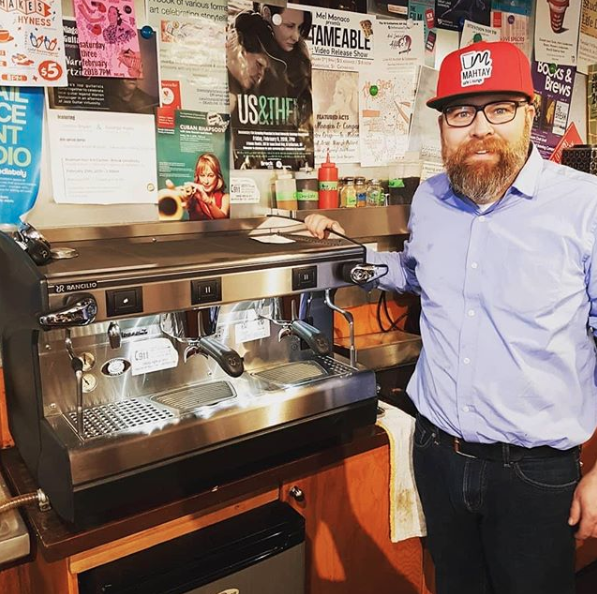
How do you stay current in the industry?
When you’re in the food and restaurant industry you really have to stay current– coffee shops especially. We really pay attention to food trends and staying current with trade shows and industry magazines. People are always interested in what’s new and healthy. So in this particular moment, we’re doing a purple yam latte — an ube (Ouu-bay).
Social issues are also really important to us, so it’s important staying on top of that as well. A lot of that comes from having staff that are savvy. I think this really allows for us to tap into our community.
What is this purple latte you mentioned?
It’s exactly what it sounds like, it’s a purple latte– ube, which is made out of purple yams. It is very popular in Malaysia and has a ton of health benefits. But with this month [September], being a purple month with the Grape and Wine festival, we wanted to tap into the community by doing something creative with that.

What encouraged you to get into the coffee industry?
I come from a construction background, but I always enjoyed the romance style of a cafe. Creative culture always spoke to me and that’s the same environment I wanted to create here.
I’m a very “go-go” kind of person, so the times that I’ve been on vacation have really been the only times when I’ve had the chance to experience cafe life. So that’s why it was always the romance of, “oh remember when went here and hung out at this cafe and people watched?”
So that’s where the inspiration came from. Not so much when I’m at home because I have a wife, kids and a 150-year-old home that demands a lot of attention. So places we experienced all around the world like Brooklyn, the Carolinas and the incredible coffee culture in Europe certainly drew my attention to cafe life.
That’s why we don’t have TV’s in our shop. You can get that someplace else; there are lots of coffee shops that do that really well. But we wanted to create a space where creatives can gather around, talk, eat, and get away from the outside world for a bit.
Is there anything that has encouraged change since you’ve started?
I wouldn’t say that it’s more systematic than what it is symptomatic. When there’s something that needs to be addressed then we’ll do it.
When we first started I would come in on a Sunday and no one would be around, but I told my daughters that if I needed them they would have to jump in. But now that’s totally different. In the fall and winter time, Sundays are our busiest day of the week. So that certainly dictates necessary change.
But on the other hand, we’re always pretty driven so we’re always looking for innovation, new ideas and opportunities.
Recently we bought a coffee trailer which will be our next thing that will allow us to go to events and sell coffee. We’ve been asked to do a lot of corporate events or events at wineries, but not having a mobile unit can be a pain in the neck. So if we have something that is all set with everything you need, all you have to do is pull [the trailer] and drop it off.
From food to coffee, how do you come up with new products?
Everyone here is really bought into what we’re doing. So we’re drawing on our community and our staff to create new things.
They’re always saying, “hey I saw this and we should try that, but what if we did it this way instead?”
Some ideas are more difficult than others but a lot of the time we’ll be open to it an putting our own spin on it.
We tried this one particular drink [ube latte] someplace else so we thought, “hey that’s pretty good why don’t we try that out and make it incorporate something else into it?”. So that’s how the [ube latte] in particular came about.
But demand and always wanting to try and be innovative definitely plays a large role in what we do around here.
How do you look for validation in the products you sell?
That’s a good question, actually.
Customer feedback is always a big one. We have a very chatty staff so that helps us figure out what people like and what they don’t like. So on an anecdotal level that helps us get validation on what products are working and what isn’t.
But of course, sales dictate a lot as well too. If something is still selling strong, we’re of course going to keep it on the menu.
Where does the name Mahtay come from?
Okay, so it’s a phonetic pronunciation of the word “Yerba Mate” (ur-ba mah-tay) which is a South American tea.
When we were first opening up business we really wanted to distinguish ourselves from other coffee shops and Yerba Mate represented what we wanted Mahtay to be about.
[Yerba] Mate is a communal drink that you traditionally put loose leaf in a gord they call a guampa. Then you get a perforated straw called a bombilla. Then you pour hot water in [the gord], you drink it, and then you pass in on to the next person in which they do the same. It keeps getting passed around and often it’s used in a community and the end of the day with family or friends.
That was what we were trying to do with Mahtay. We wanted to connect with the community and we thought this drink really represented that well.
[simple-author-box]
Plastic Alternatives: 10 Easy Options To Start Using Right Now
How To Integrate Plastic Alternatives In Our Day-To-Day Lives
Okay, so plastic is bad. But what are the alternatives? Plastic is everywhere and we need to do something to cut back on our plastic use. Easier said than done though, right?
Here’s a quick guide on what you can to do implement some plastic alternatives in your day-to-day life.
Where Can You Find Alternatives To Plastic?
There are plenty of ways you can reduce how much plastic you use by finding plastic alternatives. We’ve listed 10 options you can try, that fall under four key areas:
1. Plastic Straws
2. Plastic Bags
3. Plastic Wrap
4. Plastic Packaging
Change is good: plastic straw alternatives
Have you been to downtown Toronto recently? You might have noticed a bright orange sign as you make your walk past Union station.
A&W is at it again, but they aren’t walking around offering free teen burgers this time. The brand has displayed a 35-foot-long “Change Is Good” sculpture that is made entirely of plastic straws. 140,000 staws to be exact. This is all part of their initiative to cut back on their plastic use which will keep 82 million single-use plastic straws from ending up in landfills or bodies of water.
That figure right there is why there needs to be plastic straw alternatives. Plastics that are smaller than two inches (i.e., plastic straws) fall through the recycling sorter which is why there is such a staggering about of plastic straws that end up in oceans and landfills.
So what can we use instead?
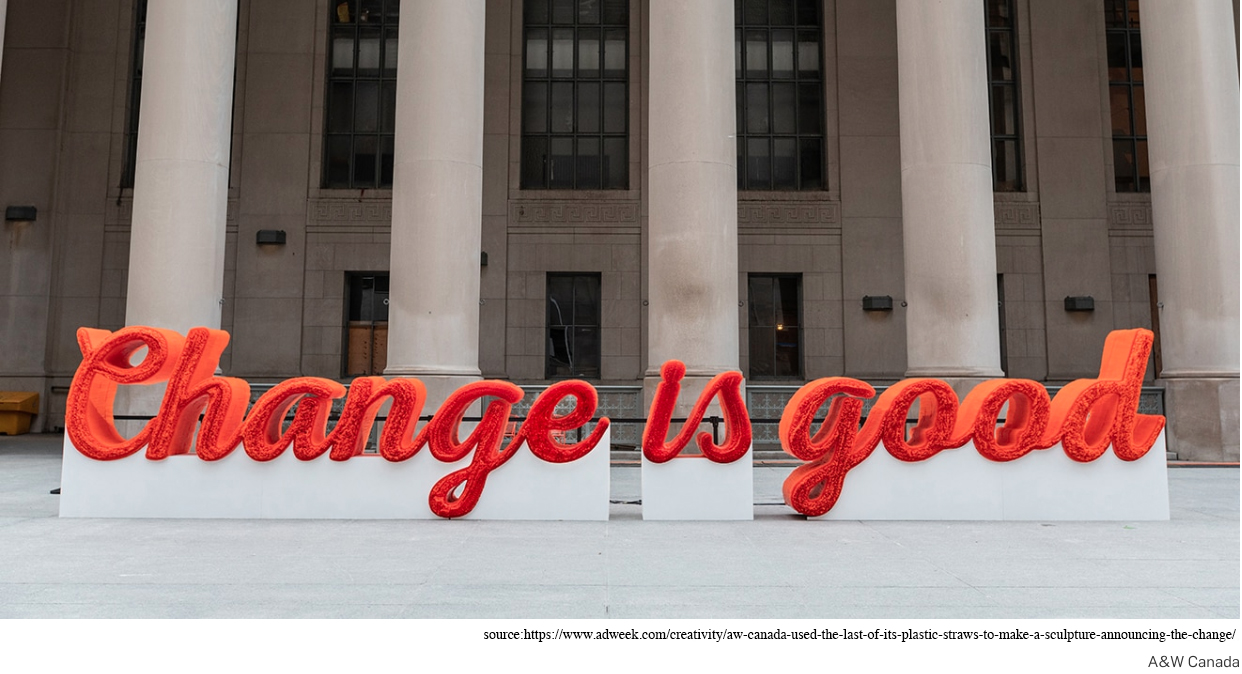
Plastic Straw Alternative 1: Paper Straws
Ah, the simple paper straw. This alternative has perhaps caused just as much controversy as to their plastic counterpart. Yes, they’re a great way to cut back on plastic use but nothing tastes the same when you’re drinking from a paper straw. And not to mention that gross soggy feeling you get when the straw has been sitting in liquid for a while – yuck!
Paper straws have proven to be an effective but not desired plastic straw alternative. When asked about which plastic straw alternative appeals to them most, only 12% of Caddle survey members indicated them as appealing.
Plastic Straw Alternative 2: Biodegradable Straws
Okay, so paper straws are a decent solution but certainly have some cons to them. What about biodegradable straws? This option could prove to be investment-worthy for both consumers and industry leaders.
Biodegradable straws are made up of polylactic acid. Doesn’t sounds to environmentally friendly, right? What if I told you this means that they’re actually made from plant starch and oil that typically comes from corn! Neat eh? What’s good about this is that since they’re made from plant materials, these straws are able to decompose naturally, thus proving to be an effective plastic alternative.
Not to mention, they look, feel, and hold just like a plastic straw would and it doesn’t get all mushy like a paper straw would.
This option of so called ‘eco-friendly plastic’ seems to be a viable one. While only 3% of Caddle survey members indicated that they use biodegradable straws, 18% of survey members indicated that this option appeals to them most.
Plastic Straw Alternative 3: Stainless steel straws
One final option in our plastic alternative arsenal is the infamous stainless steel straw. This option has hit the market in a big way. While it seems to be the most durable and mutually beneficial for the user and environment, there are certainly some drawbacks to this option.
Let’s talk about safety.
First off, sanitary safety. Stainless steel straws are a great idea to have at restaurants or have around the home, but you’re going to have to clean them after every use. We all have different degrees of cleanliness, so what might be clean to someone might not be the same to the other. So this poses an issue.
Secondly, stainless steel absorbs and retains heat. In some cases this is good. But in other cases such as this, you might really regret this purchasing decision. If your drink is scalding hot, be prepared to burn your lips. On the flip side, if you like your drinks cold, be prepared for a quick chill when you bring that straw to your mouth.
From a business standpoint, this option appears to be the most valuable. 21% of Caddle members indicated that stainless steel straws are the most appealing to them.
Plastic Straw Alternative 4: Nothing
This option is pretty self-explanatory. 😉
Alternative to Plastic Bags
How many times have you gone to the grocery store and gone to the checkout line only to remember that you left your reusable bags in the car? I know I’m guilty of it! You can either buy more reusable bags (but you already have more than you need), attempt to strategically carry your groceries without dropping them or… buy yet more plastic bags.
Earth damaging plastic: 1
Best practices to save the planet: 0
Ways to Reduce Plastic Bags
So you’re trying to cut back on your plastic bag use. You’ve got a ton of them at home, you see people using them all the time at the grocery stores, and you see plastic bags floating in the wind getting caught in trees. What do you do?
Here are some quick options:
1. If you don’t need it, say “no thanks” to the sales clerk
2. Try your best to remember to bring your reusable bag
3. Follow a recycling program that takes your plastic bags for you
4. Re-use the plastic bag, they make great lunch bags or recycle bags
Plastic Bag Alternative 1: Jute
Turns out vegetables aren’t just good for you, they’re good for the environment too! Jute is similar to that of cotton and resembles the feel and texture of hemp. This option is a cheap and easily producible option for a plastic bag alternative. When you’re done with it after several uses, throw it in the compost if you want!
Plastic Bag Alternative 2: Canvas bags
This option is certainly the most common option, and why wouldn’t it be? Canvas bags are those bags that you have probably seen at the grocery store. They make quick and easy alternatives to plastic bags. Not only are they reusable, but you can even throw them in the wash if they get a little dirty.
Side note: Don’t want to spend the money on canvas bags but have a ton of old jeans or denim skirts? Sew the bottoms of those suckers and keep the waist open, you’ve got a stylish denim bag!
Plastic Bag Alternative 3: Paper bags
Whatever happened to going grocery shopping and coming home with two huge paper bags full of groceries? I remember seeing this on TV as a kid but never got to live this fantasy, guess it was before my time. For you Ontarian readers, maybe grocery stores could take after the LCBO with their use of the paper bag?
But who’s to stay this option shouldn’t hit the market again? It’s cost-effective, environmentally friendly, and can hold a heck of a lot more than what plastic bags can.
Issues on this option scale from minor to severe. On the less severe side, paper bags are prone to be less effective if you’re carrying the bags in the rain. On the more severe side, a deforestation issue could occur due to rising production in paper products. Then we have an even worse crisis next to plastic pollution.
Alternative to Plastic Wrap
This one stumped me for a while. Plastic wrap has such a convenience to it, but what alternatives (if any) are there that can substitute using plastic wrap?
Maybe I couldn’t wrap my head around it (heh, get it?) but there are quite a few quick and easy alternatives to plastic wrap that I bet you might even have laying around your home.
First up, storage containers such as tupperware and glass jars. They’re quick, they’re simple, and everyone’s got em.
How about parchment paper or aluminum foil? The worst is when you put your food in the microwave and forget to take the plastic off and you end up turning your once edible food into a delicious looking plastic display. Although for cost purposes we don’t suggest keeping the aluminum foil on your food in the microwave. You can certainly do this with parchment paper though!
How are we Going to Cut Back on all This Plastic Packaging?
Now here’s a tough question.
Whether it be the grocery store or a tech store, a lot of our products are kept safe in plastic packaging. Let’s be honest though, we could do away with all that plastic packaging. Especially that tough stuff that takes the jaws of life to open a package – good riddance.
Alternatives to Plastic Packaging
On the consumer side, this is a pretty difficult task. We don’t wrap our products in plastic, we just buy the stuff and throw out the excess.
But finding ways to reduce plastic packaging is key. An estimated 40% of plastic produced is packaging. So this one is on you, company innovators!
One option that seems to be a common trend here is plant-based plastics. This plastic packaging alternative is a simple one that looks and feels like plastic and is easily malleable so it can be turned into any shape. But would this be an effective product packaging both food and tangible products, or just one or the other?
Zero-waste Grocery Stores
While this next option isn’t necessarily an alternative to plastic packaging itself, this idea is one that is making slow progress in the market and has the potential to grow in the industry under the right circumstances.
Zero-waste grocery stores are sparsely spread throughout Canada but offer an environmentally friendly alternative to plastic packaging.
You as a consumer would walk into the grocery store with your own packaging, whether that be tote bags or reusable containers, pick off the shelf an item you want, weigh your items at checkout and go home.
This option is a green alternative and Caddle members indicate that this might be a viable option. 30% of survey members indicated that they have no concerns with bringing their own reusable containers and bags for purchasing food at their local grocery store.
A Viable Solution to Our Plastic World
There you have it. We know that plastic is everywhere and it’s not easy to get rid of it. But there are certainly some plastic alternatives that are easy to use when you take the time and think about it.
Which plastic alternative do you think will hit the market sooner than later and have a positive impact on the environment?
[simple-author-box]
Caddle Ranks in Canada’s Top New Growth Companies for 2019
Caddle named to 2019 Startup 50
Canadian Business unveils 2019 list of Canada’s Top New Growth Companies
ST. CATHARINES, Ont. (September 12, 2019) – Nearly five years after it launched, St. Catharines-based mobile app and research firm Caddle has earned a coveted spot on the 2019 Startup 50 ranking of Canada’s Top New Growth Companies.
Canadian Business and Maclean’s today ranked Caddle No. 35 on the annual list. Serving as a companion list to the longstanding Growth 500 ranking of Canada’s Fastest-Growing Companies and produced by Canada’s premier business and current affairs media brands, the Startup 50 ranks younger companies on two-year revenue growth. Startup 50 winners are profiled in a special print issue of Canadian Business published with Maclean’s magazine and online at CanadianBusiness.com.
Caddle made the 2019 Startup 50 list with two-year revenue growth of 517%.
“The 2019 Startup 50 winners suggest the future of Canadian entrepreneurship is extremely bright. They have brought new offerings to market, created indelible brands and disrupted established business models—all in an extremely short period of time,” says Beth Fraser, Startup 50 and Growth 500 program manager. “Any aspiring entrepreneur should look to their stories for inspiration.”
Since opening its doors in 2015, Caddle has experienced rapid growth in the number of consumers tapping into its app to earn cash and save money on groceries, eating out and shopping by answering surveys, watching ads, uploading receipts, and writing reviews. Companies such as Nestle, PepsiCo., and P&G are a few major brands that have enlisted the company’s help to better understand and reach consumers.
Caddle CEO Ransom Hawley says being named to the 2019 Startup 50 list is a testament to the young company’s drive to succeed in a highly competitive digital marketplace by offering consumers and clients the tools they need for better engagement.
“We’re thrilled to be recognized among some of the fastest growing startups in the country,” he says. “We’re passionate about what we do and everyone on the team has put in a tremendous amount of work to make sure we have a top-quality product, so it’s very rewarding to see that effort paying off.”
Find more information about Caddle at getcaddle.com, on LinkedIn or Twitter at @CaddleCanada.
About the Startup 50
Ranking Canada’s Top New Growth Companies by two-year revenue growth, the Startup 50 profiles the fastest-growing startups in the country. It is a companion list to the Growth 500 ranking of Canada’s Fastest-Growing Companies, which has, for over 30 years, been Canada’s most respected and influential ranking of entrepreneurial achievement. Both the Startup 50 and Growth 500 are published in a special issue of Canadian Business published with Maclean’s magazine and at CanadianBusiness.com. For more information on the ranking visit Growth500.ca or CanadianBusiness.com.
About Canadian Business
Founded in 1928, Canadian Business is the longest-serving and most-trusted business publication in the country. It is the country’s premier media brand for executives and senior business leaders. It fuels the success of Canada’s business elite with a focus on the things that matter most: leadership, innovation, business strategy and management tactics. Learn more at CanadianBusiness.com.
The Caddle Difference
Caddle helps companies like PepsiCo, Domino’s, and Deloitte make better decisions, faster. Caddle is a mobile-first insights marketplace that rewards consumers for engaging with brands on a transparent and privacy-first environment. In return, companies get access to insights and data faster and more cost-effectively than any other platform in Canada.
For more information, please visit getcaddle.com.
Oil free, cruelty free & anti-aging serum among moisturizer wants
Time and time again we hear in advertisements that moisturizer is the key to healthy, long-lasting skin. And quite frankly, they’re right! You never really realize how great moisturizer is until you’ve got uncomfortably dry skin that is begging for a little TLC.
But we all use moisturizer for different wants and needs, which is exactly why the market has such a high demand for product innovations that can tend to several different audiences. Market Research Future reports that Manufacturers have been focusing on developing unique formulations and adding it to the existing product line in order to enhance the value of their product range. Therefore, this industry is a very customer-oriented market in order to meet their needs.
With the market constantly in the battle to develop new and improved innovations and integrate them into their product lines, the industry is expected to have a calculated 5.7% compound annual growth rate during 2013-2023.
But what kind of innovations do consumers want from their moisturizer? You’re in luck, Caddle has the answers! Recently, we surveyed over 11,000 of our members on their moisturizer purchasing habits, and we were intrigued when comparing our results with industry trends. Let’s find out what we learned.
A product for any skin type
Ah, the battle of the generations. You’ve heard it before, “those darn millennials” or “those outdated baby boomers”. Believe it or not, the battle between generations has been an argument that has been passed down for generations and will continue to do so.
But maybe that’s because we all want different things? This certainly seems to be a possibility when it comes to moisturizer. When we asked our members what innovations they would be most interested in trying, each generation voted for something different. This is fluid with the industry itself as moisturizing cream has been segmented on the basis of specialty attributes. These attributes consist of:
- Natural & organic
- Herbal
- Cruelty-free
- Anti-aging
- Acne
Let’s face it, a 60-year-old baby boomer is less likely to apply acne prevention moisturizer on their face than what a 16-year-old would, and the same can be said that a 16-year-old is less likely to apply anti-aging moisturizer to their face.
The point is, each generation is going to want something different out of their moisturizer, so it’s only fair that those in the industry meet each generation’s needs. And, why wouldn’t they? More wants lead to more opportunities for innovation, which leads to new product lines, which lead to profit!
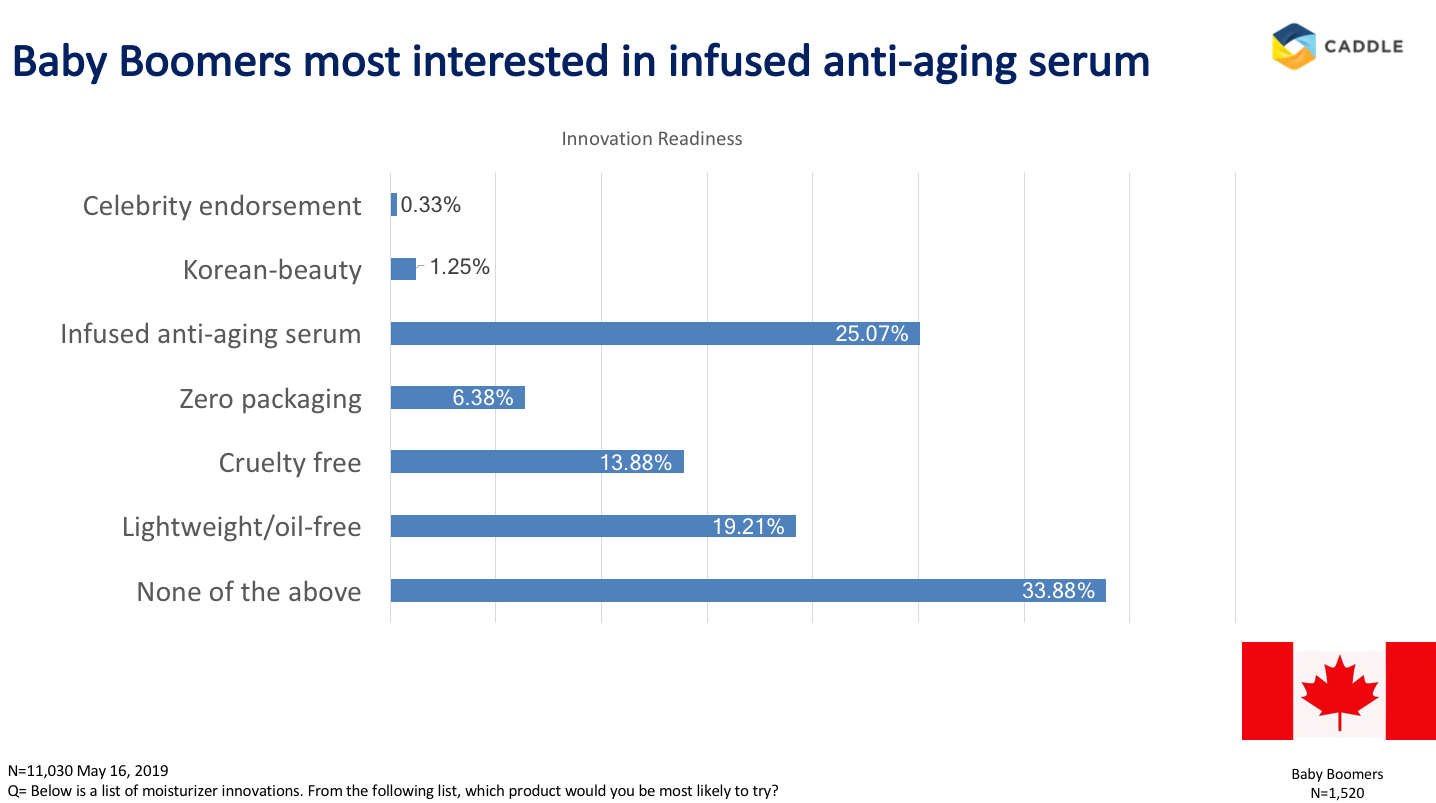
Vegan Moisturizer?
Not quite, but close! Being vegan means more than just cutting meat out of your diet, it means taking care of those little critters too. In turn, this rapidly increasing lifestyle is having a big effect on the CPG industry. In particular, “market share of cruelty-free moisturizing cream is found to be growing at a higher rate due to the rising population of vegan consumers,” noted Market Research Future.
This is something that holds true to Gen Z members. When asked what innovations they would be most interested in trying, 32% of Gen Z members indicated that they would be most interested in trying cruelty-free moisturizer. When compared to other beauty products, this seems to be a common trend. When we asked our members, what cleansing wipe innovations they would be most interested in trying, Gen Z members again indicated that they would be interested in a cruelty-free product.
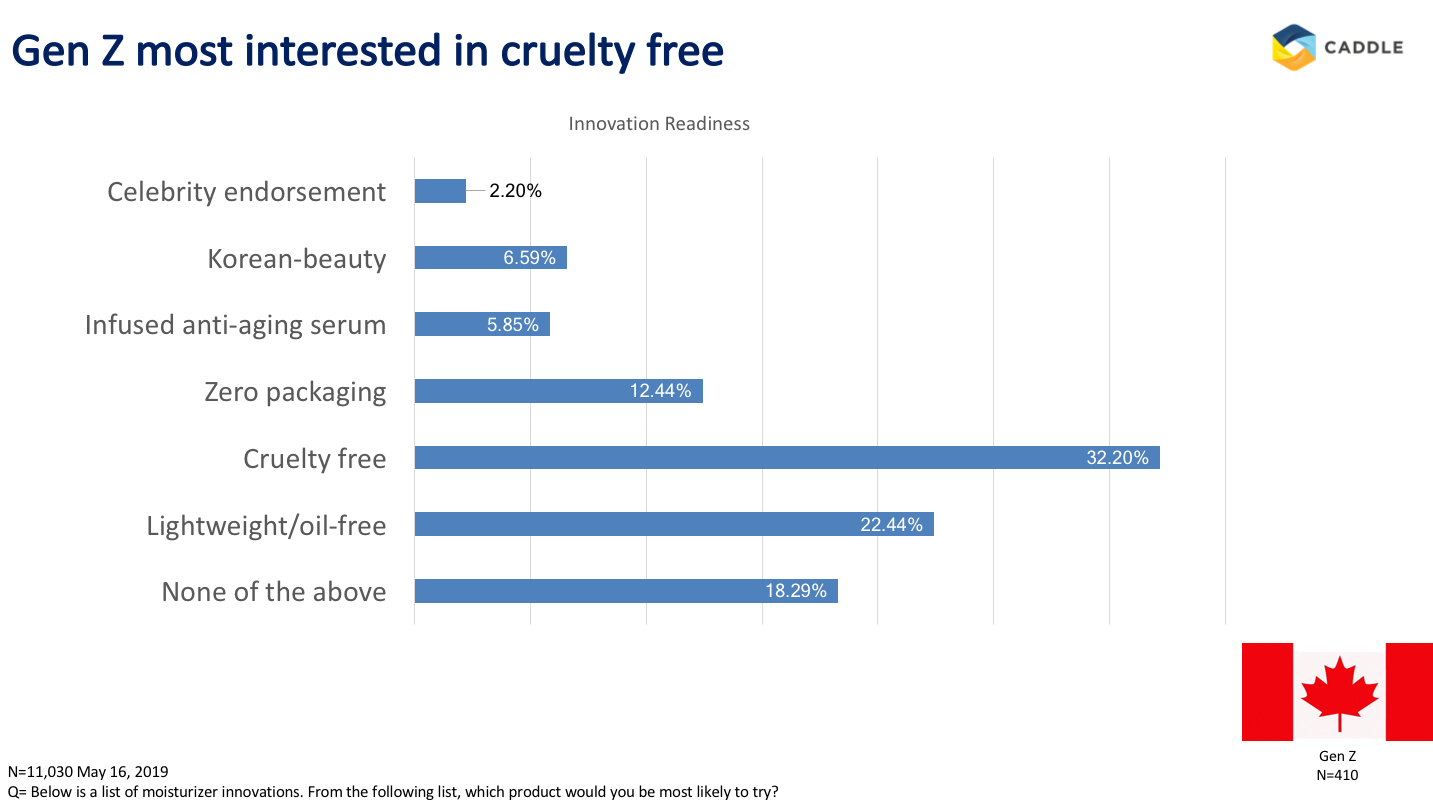
It appears that veganism is a relatively new lifestyle, so where do Gen X and Millennials fit into this category? They too are following suit. While these members indicated that they would be most interested in Oil free/lightweight moisturizer, their second common innovation turned towards, — you guessed it – cruelty-free.
This creates the perfect opportunity for industry leaders to develop products that meet the needs of multiple consumers wants. Take Alba Botanica for example. Their Acnedote Oil Control Lotion is a lotion that is not only oil-free but cruelty-free too.
Certainly, creating a single product that meets the needs of multiple audiences is bound to turn a profit.
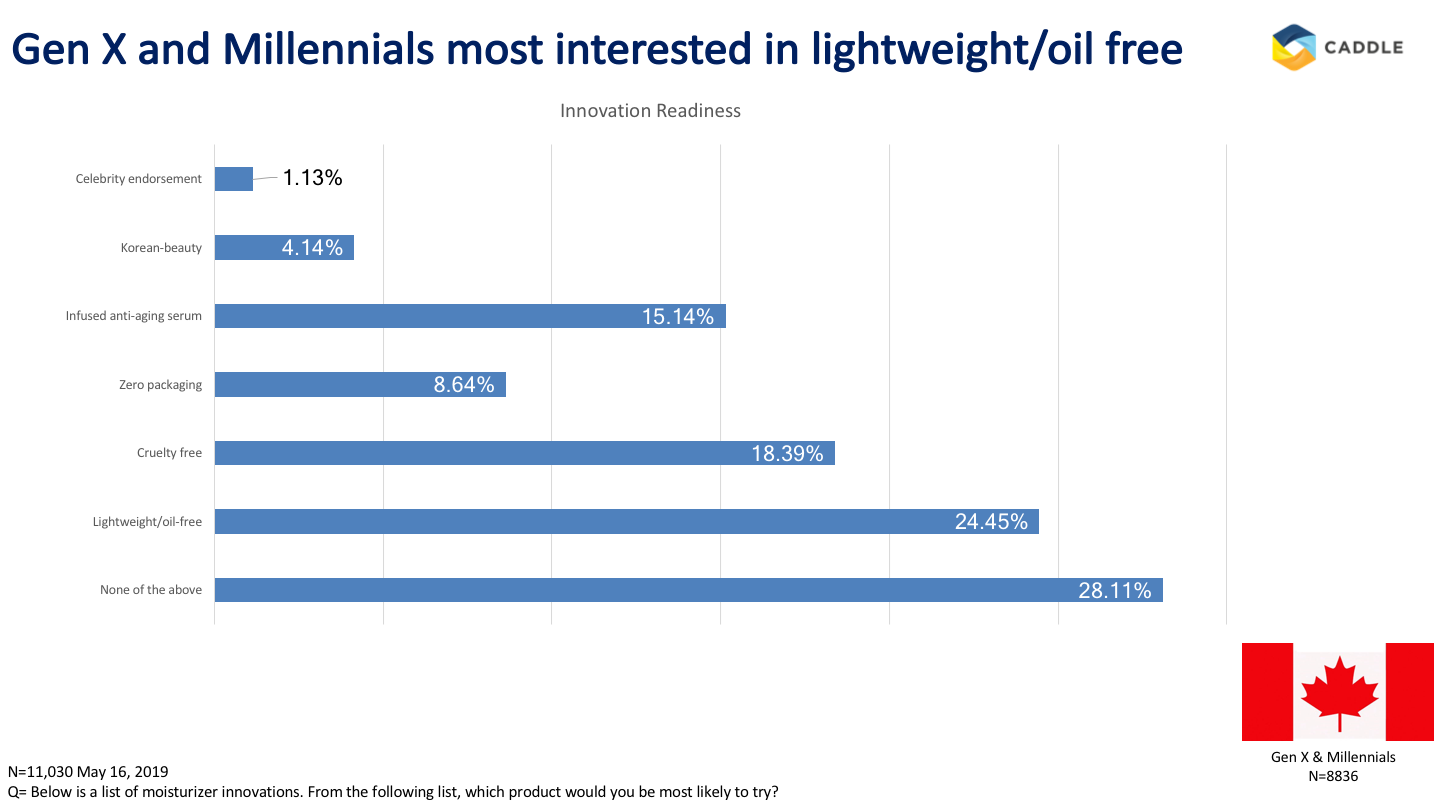
Is K-beauty the road to healthy skin?
With some products, we tend to be brand loyal beings. In the case of moisturizer, while 46% of members indicated that they would purchase a different brand of moisturizer if their preferred brand was out of stock, a surprising 21% said that they would go to a different store to find their preferred brand.
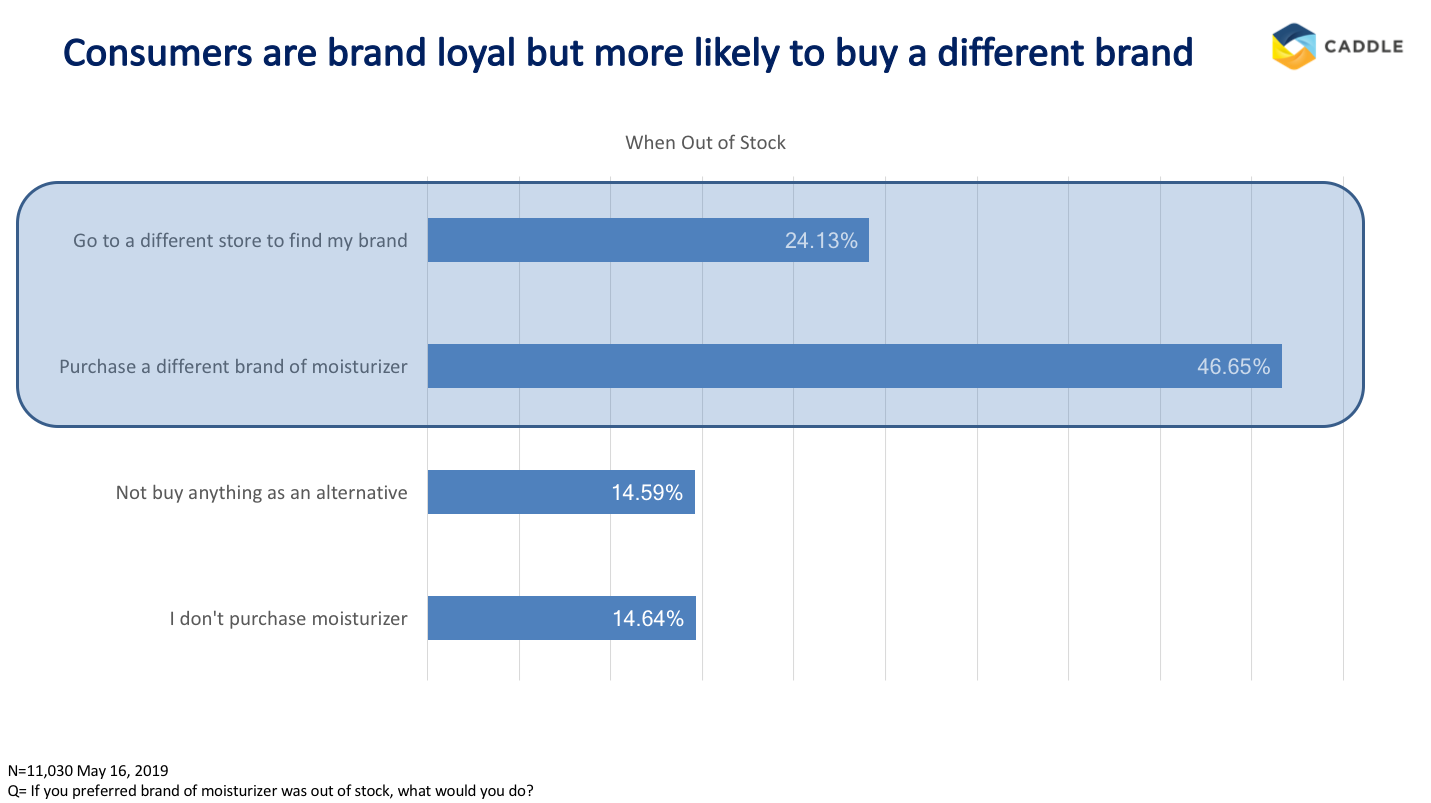
But when it comes to your face, your main concern shouldn’t be brand says beautytap.com. Skin manufacturers don’t know every skin type, let alone your own, so it’s important to be loyal to your skin’s needs and the ingredients that meet them.
“The options come directly to us by the brands themselves, which is why K-beauty (Korean beauty) stands mostly apart from the pack. You see, as a general rule, we’re pursuing them instead of the other way around,” Tracy Teel of beautytap.com mentions.
Teel makes a good point. Perhaps consumers are spending too much time being brand loyal instead of researching which brand is best for their skin. She also makes note of K-beauty. A form of beauty products that are focused on health, hydration, and naturalness.
K-beauty ranked as one of the lowest innovations that our members would be most interested in trying. Perhaps this is an untapped market that industry leaders could integrate into their product line and marketing campaigns to bring more awareness about the benefits of K-beauty.
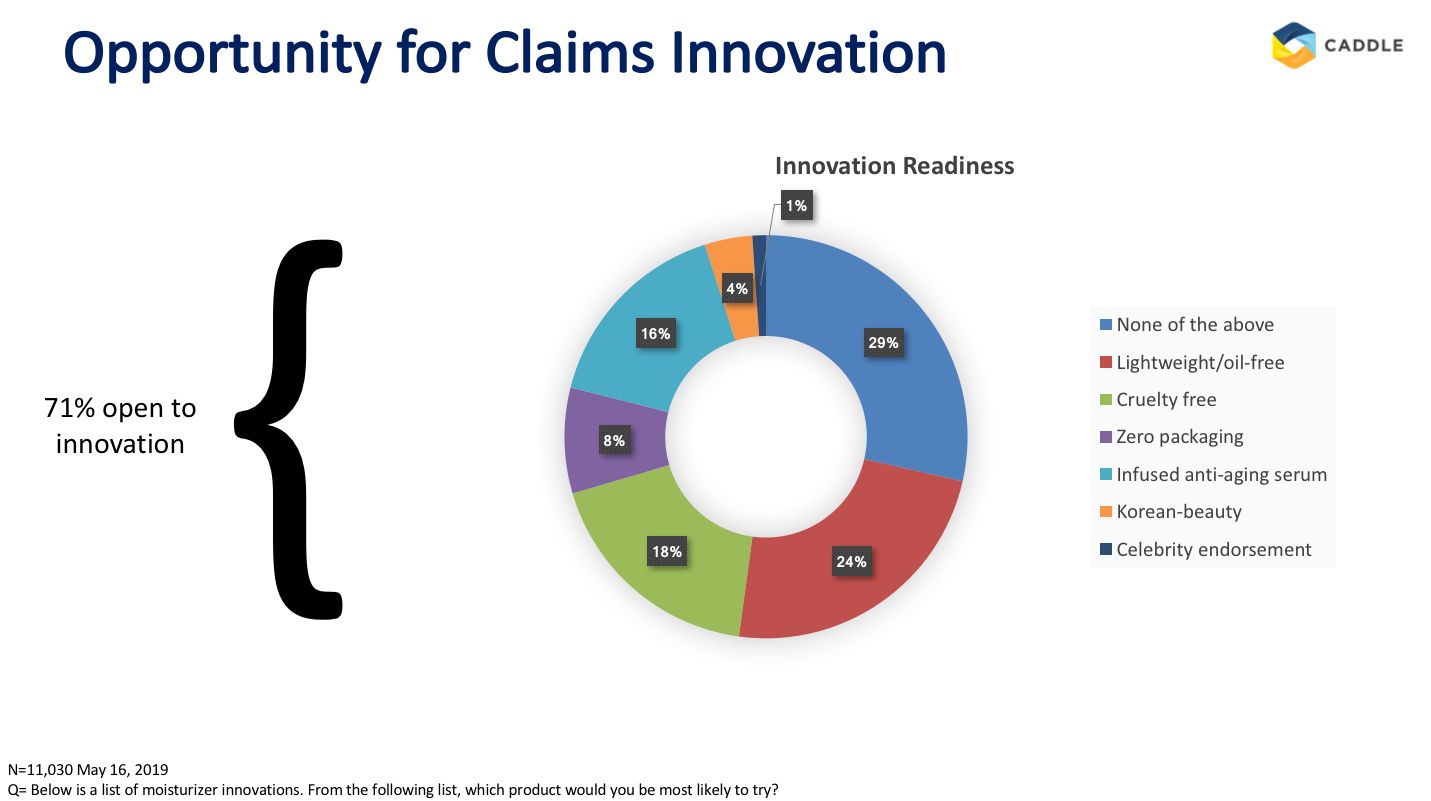
So What?
After comparing industry trends to what our members indicated in our survey, it is evident to see that the moisturizer industry is full of potential. With the opportunity to create products that tend to specific generations, or even a collective of generations in one product, or the potential marketing strategy K-beauty products could adapt, the industry is certain to see the CPAG increase as forecasted.
If you’re in the CPG industry and you’re wanting to gain insights on your consumers without lengthy wait times, please reach out to us here at Caddle so we can accelerate your time to insights.
[simple-author-box]
How to plan your time in San Francisco to make the most of your trip
Travel San Francisco
Home to the iconic Golden Gate Bridge, a booming, culturally diverse metropolis, vibrant food, arts, entertainment and night life scenes, a waterfront that attracts fishermen and tourists from afar and so much more, San Francisco is full of wonders. It’s also got a reputation as one of the most expensive U.S. tourist destinations you can visit. Luckily, we’ve done our homework, and are ready to help you save on accommodations, places to eat, attractions, and more.
Geography, population and more
San Francisco, California is located on a peninsula between the Pacific Ocean and San Francisco Bay. One of United States’ most cosmopolitan cities, it’s under 50 square miles and has a population of just over 800,000 (making it the fourth largest city by population in California).
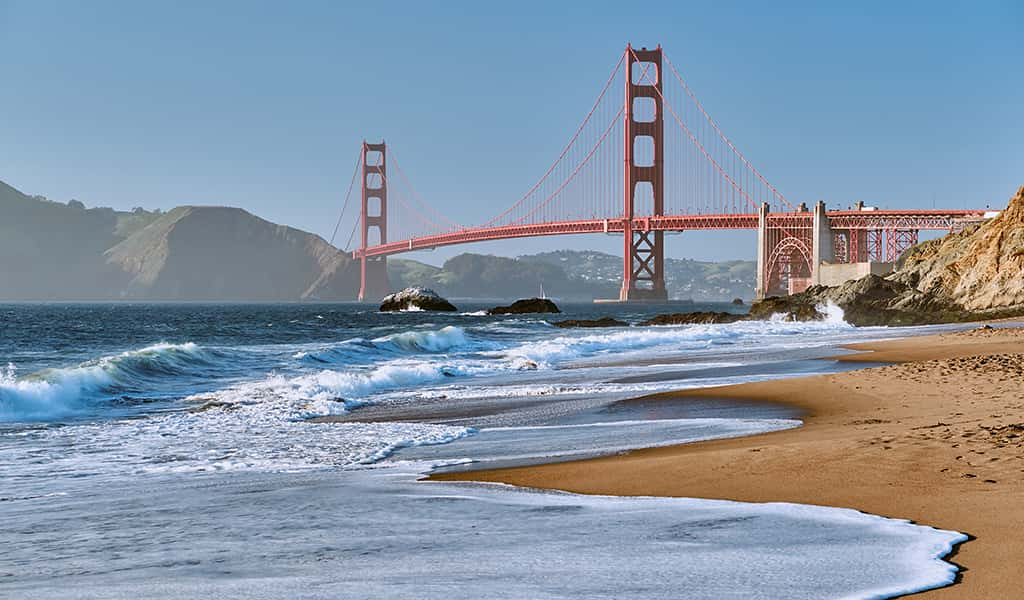
Currency and budget
Exchanging your Canadian currency for American dollars before your trip is the cheapest way to do it, since you can shop around for the best currency exchange rates, says Nerd Wallet, which breaks down where you can exchange without paying huge fees. If you wait to do it at an airport kiosk or somewhere else, fees, delivery charges and poor exchange rates could eat into your budget.
The Broke Backpacker ballparks a budget of between $70 and $85 USD ($93 to $113 CDN) per day, though they say you can get by on as low as $25 to $30 USD ($33 to $40 CDN). Budget Your Trip, which publishes average travel costs for thousands of cities around the world provided by other travelers, is in line with that range, pegging average daily cost per person per day at $68 US ($91 CDN) if traveling on a budget. According to the website, a couple could spend a week in the City by the Bay for just over $950 US ($1,274 CDN). There’s also a breakdown for accommodation, food, entertainment and other expenses.
It’s also worth it to skim The Baller on a Budget’s three-day guide to San Francisco on a budget. It’s packed with tons of great ideas for cheap places to eat, popular places to go, and more.
Save money with attraction passes
The San Francisco CityPASS (which you can buy online or at the box office of any attraction on the ticket) gets you:
- a seven-day Muni Pass good for unlimited rides on the cable car, historic trolley and other public transport
- a San Francisco Bay cruise
- entrance to either the Exploratorium science museum OR de Young Museum of Art + Legion of Honor
- entrance to California Academy of Sciences
- entrance to Aquarium of the Bay
You can also pick up the Go San Francisco Card, which can get you into 28 attractions such as:
- Hop-On Hop-Off Sightseeing Bus Tour
- Madame Tussauds
- The San Francisco Dungeon
- Ripley’s Believe It or Not!
- San Francisco Zoo & Gardens
- and more
If you’re visiting San Francisco for the first time, picking either of these passes can help you save money on popular tourist attractions and make planning your itinerary a bit easier.
When to go
If you’re hoping for clear, mild weather and fewer crowds, hotel expert Santorini Dave advises making the trip in the spring or fall – May, June, September or October. Avoid the winter, which is bound to be chilly and damp, and the summer, when you’ll see prices climb and more tourists flood the attractions. Dave has a good rundown for when to go depending on whether you want to sightsee, shop, stroll the Golden Gate Bridge, visit Pier 39 and more.
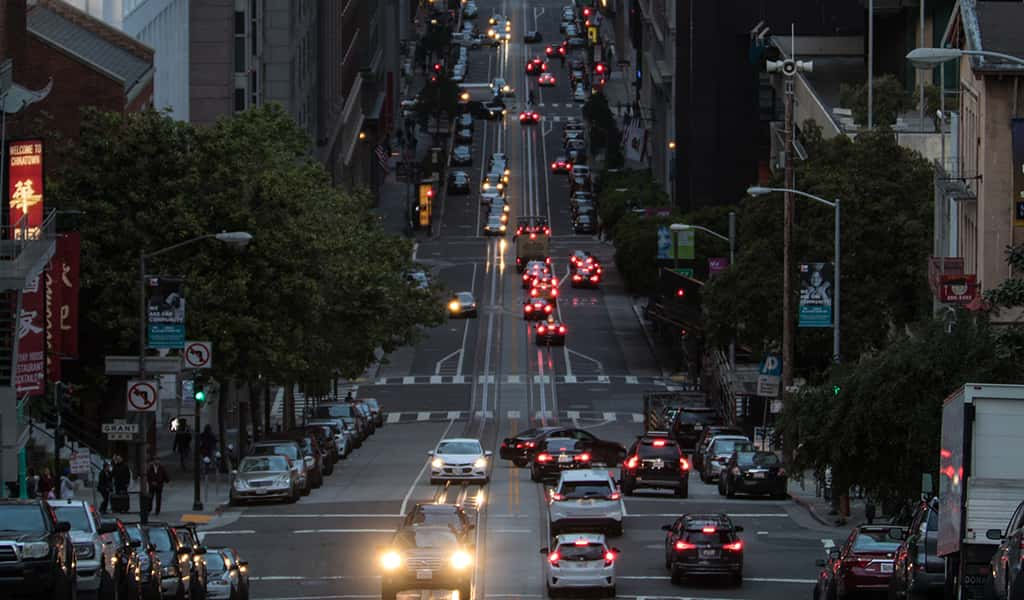
Where to stay
Though inflated prices might make you think twice at first, there are also cheaper accommodations. Affordably priced hostels, couch surfing hosts and (if you’re feeling extra adventurous) semi-urban campgrounds await. The Broke Backpacker says you’ll find most hostels are high-quality and reasonably priced, around $20 to $25 USD ($27 to $33 CDN). USA Hostels San Francisco is consistently voted as the best hostel in the city on hostelworld.com, with a well-designed and maintained property, free daily breakfasts and free dinners on Monday and Friday, plus a yoga room.
Lonely Planet also has a list of quirky motels, great hostels and cute guesthouses, from Hi San Francisco Fisherman’s Wharf hostel on the waterfront for $32 USD ($43 CDN) per night to the San Remo Hotel in North Beach for $88 USD ($117 CDN) per night, you’ve got options. Be weary of traditional hotels, though – at the time of this writing (early April 2019), a booking.com search for three-star hotels available the week of May 6, 2019 revealed prices anywhere from $200 to $400 USD per night per couple with no children for one room (switch the currency converter at the top right of the screen to reveal Canadian rates).
Also, Airbnb was founded here. If you’re looking for an authentic San Fran experience, this is the way to go.
You can also check out Rough Guides’ article Where to stay in San Francisco: an area by area guide.
Passport and safety issues
When entering the U.S., you’ll need to provide proof of your Canadian citizenship and your right to return to Canada (The Government of Canada says a Canadian passport that’s valid until the date of your intended departure from the United States is best, although you can also use several other documents). In most cases, you won’t require a visa. See travel.gc.ca for more about entry and exit requirements.
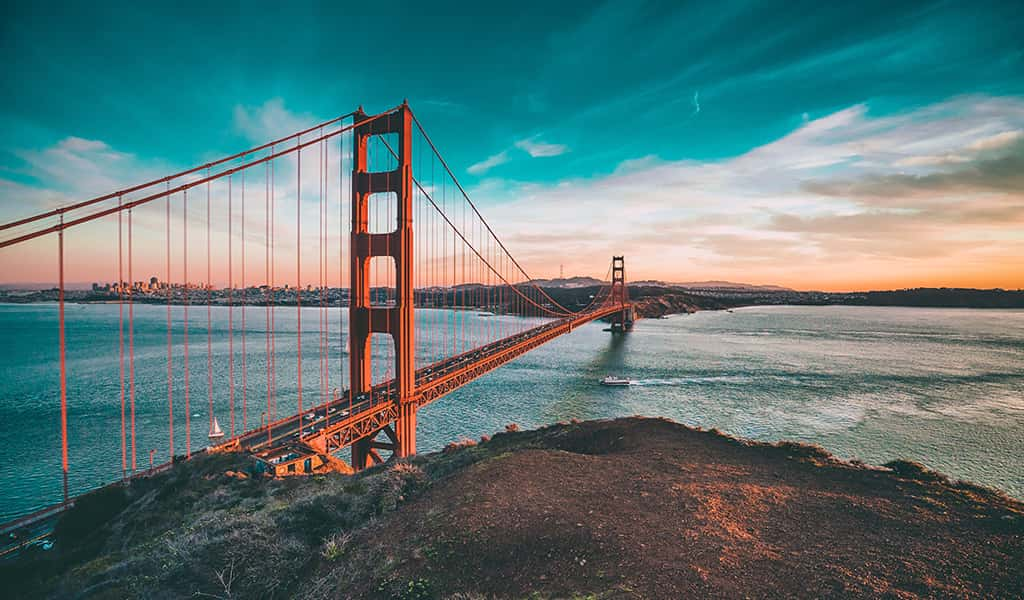
Safety
When traveling to the U.S., all the traditional safety precautions you would in any other country, like keeping close track of personal surroundings and watching out for petty theft, pickpocketing and credit and debit card fraud.
The probability that you’ll be a victim of a violent crime such as a mass shooting is low. If you are threatened by robbers, stay calm and do not resist, and lock windows and doors securely whether you’re staying in private or commercial accommodations.
Flights and transportation
Flying into San Francisco, you’re likely to land in one of three major airports:
1) San Francisco International Airport (SFO) – San Mateo County
2) Oakland International Airport (OAK) – Oakland
3) Norman Y. Mineta San Jose International Airport (SJC) – San Jose
CNN Travel has a great rundown of each airport and what to consider before you decide which one to fly into.
As for flights, Adventures with Luda recommends adding San Jose Airport and Oakland International to your list when reviewing airports to save some cash. You can also try flying mid-week and shopping around for best deals – take a look at Google Flights, then head to Skyscanner or Momondo to book.
Public transportation
TripSavvy advises against renting a car if you’re seeing the sights in the city due to high rental costs and most attractions being so close to one another, since the city is only 49 square miles.
A Muni Passport costs about $10 and is good for unlimited travel on the cable cars, historic streetcars and buses. While it’s included on some of the discount attraction admission cards, you can also purchase them separately at specific locations, although travel blogger Whimsy Soul says it’s hit or miss, adding it’s easy to head West to East across the city, but difficult to go North to South. Instead, she recommends taking Uber Pool (Uber’s carpool option) or Lyft Line to most places, since the fares are cheap. San Francisco is also a walkable city.
Another option is to take the Bay Area Rapid Transit (BART), which connects the San Francisco Peninsula with Berkeley, Oakland, Fremont, Walnut Creek, Dublin/Pleasanton and other cities in the East Bay. Kids 4 and under ride free, but everyone else must have a valid BART ticket or Clipper Card. Because fares are determined by distance traveled, time-based passes (weekly or monthly) are not available. Plan your trip and travel costs on BART using their fare calculator.
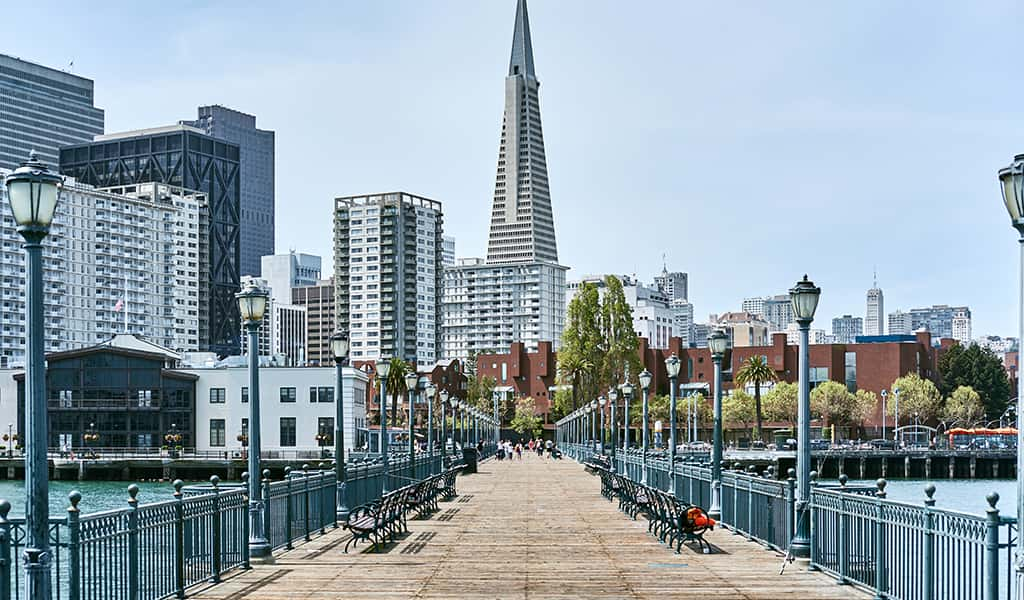
Where to eat
You won’t leave San Francisco hungry, even if you’re here on a budget. The city has an eclectic mix of options for everyone from fresh fish eaters to Chinese food lovers, food truck aficionados and farmer’s market browsers.
Visiting the waterfront? Free Tours by Foot recommends lunch at The Codmother. Though your journey will take you a few blocks away from the tourist trap restaurants, they say it will be worth it, as amazing fish and chips await. They come right off the boats at Fisherman’s Wharf! Free Tours also suggests getting the junior size, since the regular size is huge.
If you’re hankering for street food, Whimsy Soul suggests heading to food truck park SOMA Eats or to Off The Grid, food truck pop-ups with live music (bring cash). There’s a hot debate among locals about who has the best pizza – Tony’s Pizza or Pizzetta 211. She also has favourite places to grab brunch, drinks, coffee and more.
Of course, San Francisco has plenty of lounges and dance clubs with more than a few alcoholic drinks to choose from if you’re looking for a fun night out. Cider enthusiasts will enjoy Upcider, where you can get a flight of ciders and taste test different variations. Ordinary Traveler gives a thumbs up to the food here too. Over at Infusion Lounge, you’ll have fun dancing the night away and sipping moderately priced drinks. You can sign up for their guest list online and get $10 off your cover charge. Even better, at Temple Nightclub, you can do the same and get free admission.
Dining In
Looking to shave some expenses? Cook at home. Getting up early one Saturday morning to visit the iconic Ferry Building that houses one of the city’s best farmer’s markets (a hallmark of the city’s organic food scene) will be worth it, raves travel blog The Planet D.
Tip: Chinese food is very good in San Francisco and tends to be less expensive than other choices. – TripSavvy
You also might have heard about Chinatown – one of the city’s most iconic neighbourhoods. Venture here and you’re in for a treat. You’ll find everything from My Canh’s late night Vietnamese to the best egg tarts in town at Golden Gate Bakery, classic and spicy Sichuan at Z & Y Restaurant (which has welcomed President Barack Obama, living Chinese legend Cecilia Chiang and others), and even delicious blue collar fare at New Lun Ting Cafe. Eater San Francisco has a great guide for where to eat and drink in Chinatown featuring these places and several more.

What to do
See Pier 39 and the amazing waterfront
Every great major city has a waterfront with stunning views, and San Francisco is no different. Although it’s one of the area’s most popular tourist attractions, there’s also lots to see and do there, including sea lions, Bay cruises, jugglers and magic shows, several shops and places to eat, rides, and gorgeous waterfront views. Fog City Secrets has a detailed rundown of Pier 39 from a local’s point of view.
Appreciate street art
You’ll see signs of San Francisco’s thriving arts scene everywhere – no need to set foot inside a gallery. In fact, some of the most vibrant murals are just waiting to be discovered at Clarion Alley in the Mission and inside the Coit Tower. Though these are a couple of the most popular sites for street art, you can find murals across the city, says The Culture Trip.
Visit Union Square
Whether you’re looking for theatre, shopping, galleries or hotels, it’s all in San Francisco’s Union Square. This is true old San Francisco, with all the cable car photos, speakeasies like Bourbon & Branch, historic buildings and vibrant nightlife you could want. And if you’re a clotheshorse, Union Square is a rite of passage, notes Viva Lifestyle and Travel in its no-nonsense guide. Just keep in mind: homelessness is also prevalent here, so always beware of your surroundings as street characters mill about (usually minding their business).
See Golden Gate Bridge and park
Did you know you can walk or bike across one of San Francisco’s most recognized landmarks? Golden Gate Bridge – opened in 1937 and an enduring engineering marvel – is stunning at any time of day, but if you make a day of it, you can also take time to explore Golden Gate Park, a magical place with something for everyone, from the Conservatory of Flowers to the California Academy of Sciences, a carousel, aquarium, Japanese Tea Garden, and more.
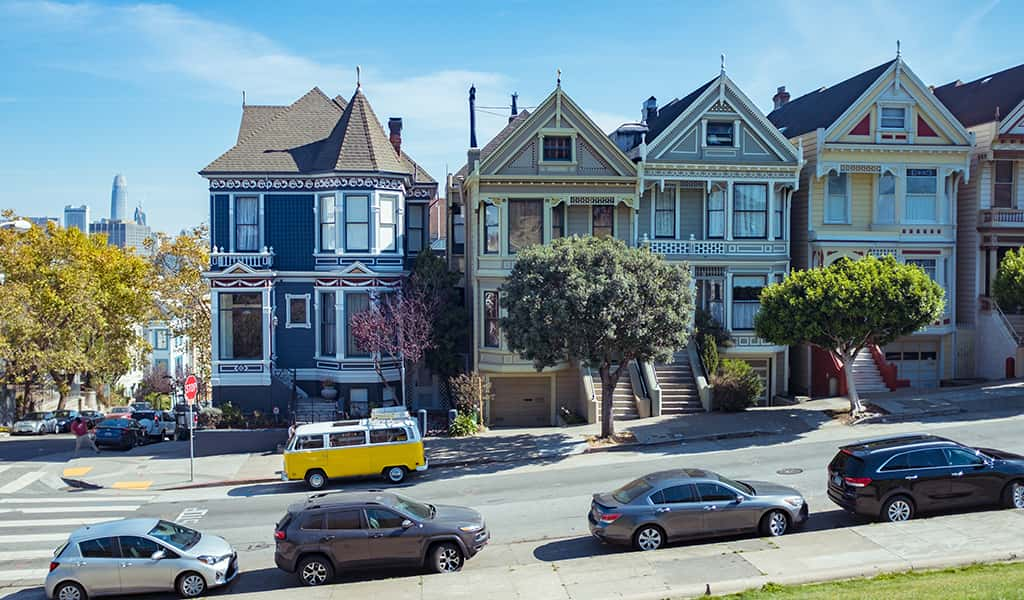
Explore Alcatraz
Alcatraz is on most everyone’s list of must-see places in San Francisco and for good reason. Although the former federal prison on Alcatraz Island was closed in the 1970s, it still holds allure as a national landmark. As Nomadic Matt notes, it was home to some of the worst criminals in the United States! Book your spot on the ferry early if you’re visiting in summer, since it fills up fast.
Looking for even more ideas? See TripSavvy’s 18 free things to do in San Francisco.
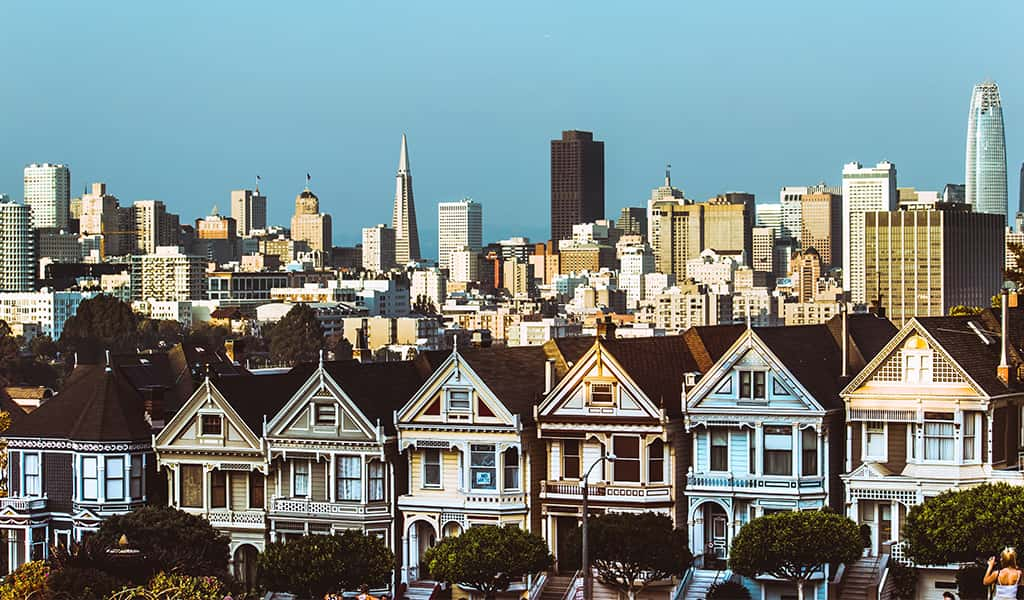
Don’t forget to tell us about your experience! Have you ever traveled to San Francisco, or are you planning to book a trip? What are your best tips when it comes to saving for vacations? We’d love to hear what you’ve planned, or any tips we’ve missed. Share your story in the comments and tell us what destinations are on your wish list. Our team love saving for holidays and we hope to inspire our members with exciting suggestions to spend your Caddle money.
